- Tour Schedule
- Krakow Old Town Free Walking Tour
- World War Two in Krakow – Jewish Quarter Free Tour
- A Walk with the Dead: Krakow Ghost Tour
- Food & Drink Tour
- Krakow Audio tour
- Street Art & Street Food
- Zakopane Day trips
- Krakow Boat Party
- Krakow Pub Crawl
- Kraków private/group tours
- Meeting point
- Leave a review
- City tours Krakow
- Krakow free walking tour


World War Two in Krakow : Jewish Quarter Free Tour

World War Two in Krakow: Jewish Quarter & Krakow Ghetto Free Tour
Welcome to our award-winning World War Two in Krakow: Jewish Quarter & Krakow Ghetto Free Tour!
One of our most interesting and compelling tours takes you to see the 700-year-old history of Jewish Quarter Krakow & the former World War Two Jewish ghetto.
From its roots as an independent Royal City, Kazimierz became the centre of Jewish life in Poland. Learn the history of this fascinating area. Before discovering how it was changed irrevocably by the arrival of World War Two in Krakow .
On this 2.5 hour tour, you will visit the Old Synagogue and the heart of Jewish quarter Krakow. You will learn about historical local figures like Helena Rubenstein. Before turning your attention to World War Two in Krakow. We visit the former Krakow ghetto and the empty chairs holocaust memorial.
We discuss the Nazi occupation, as well as well-known figures like Oskar Schindler. We visit the Krakow ghetto wall and Schindler’s List filming locations .
You will also learn about Kazimierz since the war. We look at how this once-forgotten part of Krakow is now a revived hub of street art and great food.
Your city break isn’t complete without a visit to Jewish Quarter Krakow .
Meeting Point: In front of St. Mary’s Basilica (Krakow main square)- Rynek Głowny 4. Time: 15.30 everyday Duration: 2.5 hours
Make sure you’re on the right tour. Look for the Plain Blue- City Walks Krakow umbrellas!
*If you’re running late, catch up with us at 15.55 outside Hamsa restaurant in Kazimierz: (Szeroka 2.)
Jewish Quarter Krakow- Free Walking Tour Highlights
- Krakow Old Synagogue
- Remuh Synagogue
- Schindler’s list film location
- Former Krakow Ghetto
- Krakow Ghetto Wall
- Empty Chairs memorial
- History of Kazimierz
- Nazi Invasion
- World War II in Krakow
- Ghetto Pharmacy
Meeting Point
When: Everyday at 15:30 (late meeting point at Hamsa, Szeroka 2)
Where: in front of St.Mary’s Church in Krakow Old Town (Main Square- Rynek Glowny 4)
How Long: 2.5 hours
Look out for our guides with the Blue City Walks Krakow umbrellas!
Search the Holocaust Encyclopedia
- Animated Map
- Discussion Question
- Media Essay
- Oral History
- Timeline Event
- Clear Selections
- Bahasa Indonesia
- Português do Brasil
Featured Content
Find topics of interest and explore encyclopedia content related to those topics
Find articles, photos, maps, films, and more listed alphabetically
For Teachers
Recommended resources and topics if you have limited time to teach about the Holocaust
Explore the ID Cards to learn more about personal experiences during the Holocaust
Timeline of Events
Explore a timeline of events that occurred before, during, and after the Holocaust.
- Introduction to the Holocaust
- Invasion of the Soviet Union, June 1941
- Gay Men under the Nazi Regime
- Paragraph 175 and the Nazi Campaign against Homosexuality
- Lesbians under the Nazi Regime
- Antisemitism
- How Many People did the Nazis Murder?
- Treaty of Versailles
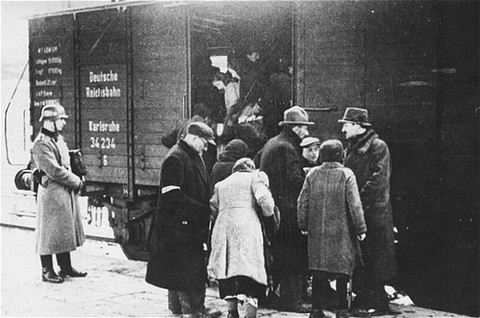
The Krakow (Cracow) Ghetto during the Holocaust
- deportations
- Jewish resistance
This content is available in the following languages
Jewish population of krakow, poland.
Founded before the end of the first millennium, the city of Krakow (Cracow), located today in southern Poland, served as the seat of the Piast Dynasty and eventually as the capital of the Polish Kingdom until the early 17th century. After the third partition of Poland in 1795, Krakow became the seat of Galicia province in the Austrian Empire. In 1918, with the reestablishment of the Polish state, Krakow became and remains one of its most important cities.
The first recorded presence of Jews residing in Krakow dates from the early 13th century. 55,515 Krakow residents identified themselves as Jews in the Polish census of 1931; on the eve of the war some 56,000 Jews resided in Krakow, almost one-quarter of a total population of about 250,000.
By November 1939, the Jewish population of Krakow, Poland, had grown to approximately 70,000. This increase reflected the concentration of Jews who fled or were driven from the countryside into the city and its suburbs, and the arrival of Jews deported east from the District Wartheland (a part of German-occupied Poland that was directly annexed to the so-called Greater German Reich).
German Occupation of Krakow
Krakow was also the capital of Krakow District in the General Government. The first District Governor was SS Major General Otto Wächter. When Wächter took over Galicia District in 1942, SS Major General Richard Wendler, SS chief Heinrich Himmler's brother-in-law, was the District Governor until his reassignment to District Lublin in July 1943. The SS and Police Leaders for District Krakow were: SS Lieutenant General Karl Zech until 1940, SS Colonel Julian Scherner from 1941 until February 1944, and SS General Theobald Thier from February 1944 until the German evacuation in January 1945. The Commander of Security Police and SD for District Krakow was SS Lieutenant Colonel Max Grosskopf. The German Security Police established their headquarters near the Montelupich Prison.
Like elsewhere in the General Government, the German occupation authorities required Jews in the city of Krakow and the surrounding areas to report for forced labor (October 1939); form a Jewish Council (November 1939); identify themselves by means of a white armband with a blue Star of David, worn on the outer clothing (December 1939); register their property (January 1940-March 1940); and to be concentrated in ghettos (September 1940-March 1941).
Krakow Ghetto
In May 1940, the Germans began to expel Jews from Krakow to the neighboring countryside. By March 1941, the SS and police had expelled more than 55,000 Jews, including refugees from the German-annexed District Wartheland; about 15,000 Jews remained in Krakow.
The Germans established several factories inside the Krakow ghetto, among them the Optima and the Madritsch textile factories, where they deployed Jews at forced labor. Several hundred Jews were also employed in factories and forced-labor projects outside the ghetto. One of these factories was Oskar Schindler's German Enamelware Factory ( Deutsche Emailwarenfabrik ).
In June 1941, Krakow SS and Police Leader Scherner authorized the establishment of two forced-labor camps for Jews on the Jerozolimska Street in the Plaszow suburb of Krakow, one for men and one for women. By February 1943, the SS had established seven other forced-labor camps in Plaszow. Inside or adjacent to the camps were several textile factories; the SS deployed Jews with the Siemens firm and in a brickworks factory and a stone quarry. The Germans deployed Jewish forced laborers on construction projects as well, building or repairing bridges, rail track, and an indoor sports complex. By February 1943, the Jerozolimska Street camp housed approximately 2,000 Jewish men and women.
Operatives of Operation Reinhard , within the framework of which the SS and police planned to murder the Jewish residents of the General Government, arrived in Krakow in spring 1942. The Germans claimed to be deporting some 1,500 Krakow Jews to the forced-labor camp in Plaszow; in reality the transport was directed to the Belzec killing center. On June 1 and 6, 1942, the German SS and police deported up to 7,000 Jews via Plaszow, where the camp authorities assisted in the murder of approximately 1,000, to Belzec. On October 28, 1942, the Germans deported nearly half of the remaining Jews in the ghetto, approximately 6,000, to Belzec. During the deportation operations, Plac Zgody and the Optima factory were the major assembly points. During the operation the SS and police shot approximately 600 Jews, half of them children, in the ghetto.
Liquidation of the Krakow Ghetto
The SS and police planned the liquidation of the Krakow ghetto for mid-March 1943, in accordance with the Himmler's order in October 1942 to complete the murder of the Jews residing in the General Government, incarcerating those few whose labor was still required in forced-labor camps.
On March 13-14, 1943, the SS and police carried out the operation, shooting some 2,000 Jews in the ghetto. The SS transferred another 2,000 Jews—those capable of work and the surviving members of the Jewish Council and the Jewish police force ( Ordnungsdienst )—to the Plaszow forced-labor camp. The rest of the Jews, approximately 3,000, were deported to the Auschwitz -Birkenau killing center in two transports, arriving on March 13 and March 16. At Auschwitz-Birkenau, the camp authorities selected 549 persons from the two transports (499 men and 50 women) to be registered as prisoners. They murdered the others, approximately 2,450 people, in the gas chambers.
After the revolts of Jewish prisoners in the Warsaw ghetto (April-May 1943), Treblinka (August 1943), the Bialystok ghetto (August 1943), and Sobibor (October 1943), the SS guards and their Trawniki-trained auxiliaries murdered virtually all of the remaining prisoners in the Plaszow forced-labor camp between September and December 1943 in several mass shooting operations. The number of Jews murdered by the SS in these shootings is unknown; it may have been up to 9,000. SS and police officials deported the survivors to Auschwitz-Birkenau.
Plaszow Concentration Camp
In January 1944, the SS Economic and Administrative Main Office took over the Plaszow forced-labor camp and converted it into a concentration camp. The SS filled the now virtually empty camp with incarcerated Jewish forced laborers from various smaller forced-labor camps in Krakow and Radom Districts and, later in the spring, with Jews deported from Hungary. Among the Jews brought to Plaszow at this time were those forced laborers living near and deployed at Oskar Schindler's German Enamelware Factory.
Since Plaszow also served as a transit camp for the movement of Jewish prisoners from surviving forced labor camps in Poland to camps further west, exact data on the number of Jews whom the SS incarcerated and killed there is not available. In September 1944, there were still 2,200 Jews in Plaszow. The SS evacuated at least 1,500 of them to Gross-Rosen concentration camp on October 15. As of the beginning of 1945, 636 prisoners remained at Plaszow; on January 14, 1945, two days after the Soviet offensive pushed the Germans out of their positions on the west bank of the Vistula River, the SS evacuated these last prisoners on foot to Auschwitz.
Resistance in the Krakow Ghetto
A Jewish resistance movement existed in the Krakow ghetto from the time the ghetto was established in 1941. Its leaders focused underground operations initially on supporting education and welfare organizations. In anticipation of the deportation operations that the SS carried out at the end of October 1942, some leaders in the more radical wing of the underground, two existing resistance groups, the Zionist-oriented Bnei Akiva, led by Laban Leibowicz, Shimon Draenger, and Dolek Liebeskind, and the Socialist Ha-Shomer ha-Za'ir group, led by Heshek Bauminger and Benjamin Halbrajch, merged into one organization, the Jewish Fighting Organization ( Żydowska Organizacja Bojowa ; ŻOB ). Independent of the ŻOB in Warsaw, this merged group prepared to fight the Germans.
Ultimately the ŻOB decided not to fight within the limited confines of the ghetto, but instead to use the ghetto as a base from which to attack targets throughout the city of Krakow. The most important ŻOB attack took place in cooperation with Communist partisans on December 23, 1942, at the Cyganeria cafe, in the center of Krakow, which was frequented by German officers. The ŻOB killed 12 Germans in this attack.
Krakow ghetto fighters also attempted to join partisan groups active in the Krakow region. In successive skirmishes with the Germans, the Jewish underground fighters suffered heavy losses. In the fall of 1944 the remnants of the resistance escaped from Poland, crossing into neighboring Slovakia and then into Hungary, where they joined with Jewish resistance groups in Budapest.
Liberation of Krakow and the Aftermath of the Holocaust
Krakow remained the administrative seat of the General Government until the Germans evacuated the city on January 17, 1945. Soviet forces entered Krakow two days later, on January 18, 1945.
After the war, some 4,282 Jews resurfaced in Krakow. By early 1946, Polish Jews returning from the Soviet Union swelled the Jewish population of the city to approximately 10,000. Pogroms in August 1945 and throughout 1946 as well as number of murders of individual Jews led to the emigration of many of the surviving Krakow Jews. By the early 1990s, only a few hundred Jews remained.
Critical Thinking Questions
Resistance comes in many forms, both violent and non-violent. Consider the many factors which may lead an individual or group to resist an oppressive regime. Investigate these factors in other periods of persecution.
What factors and conditions might delay a persecuted group from resisting?
What risks might a group or individual face when resisting the actions of government or society?
Learn about the lives of the Jews in the community of Krakow before 1939.
Thank you for supporting our work
We would like to thank Crown Family Philanthropies and the Abe and Ida Cooper Foundation for supporting the ongoing work to create content and resources for the Holocaust Encyclopedia. View the list of all donors .
Krakow walking tour: Kazimierz and the Jewish Ghetto
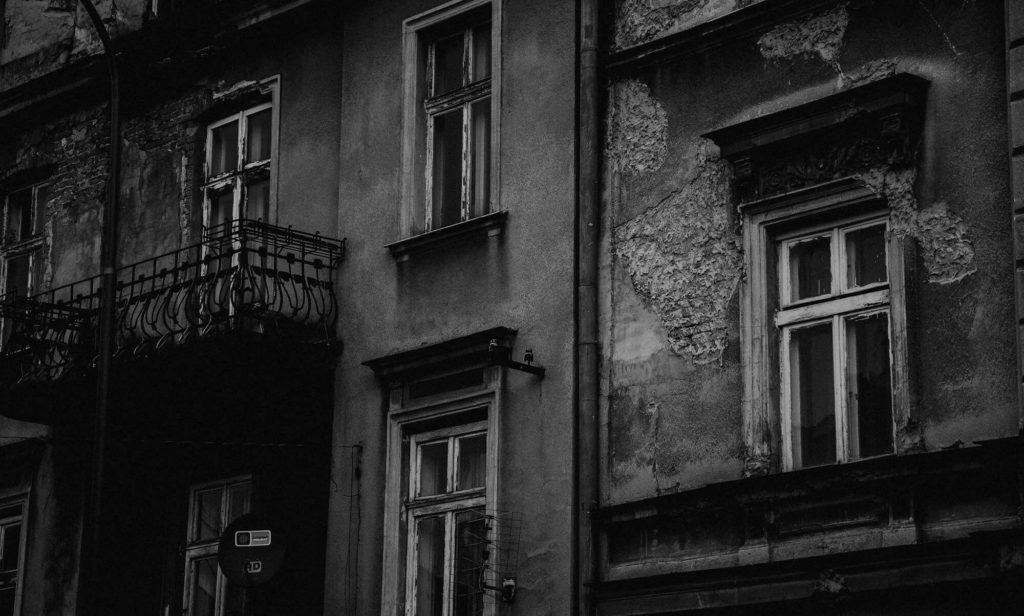
I was about 12 years old when I saw the movie Schindler’s List for the first time.
Unforgettable. Horrifying but equally magnificent.
One of the most impressive cinematographic shots I’ve ever seen was the little girl in the red coat turning up in Oskar Schindler’s (Liam Neeson) viewpoint when he was overlooking the Jewish quarter of Krakow as it was being swept clean by the Nazis - while he was having a leisurely trip by horse for fun . The girl with the red coat walking around in a part of Krakow in full turmoil. The red coat together with the flame of a candle being the only colours in an otherwise totally black-and-white movie.
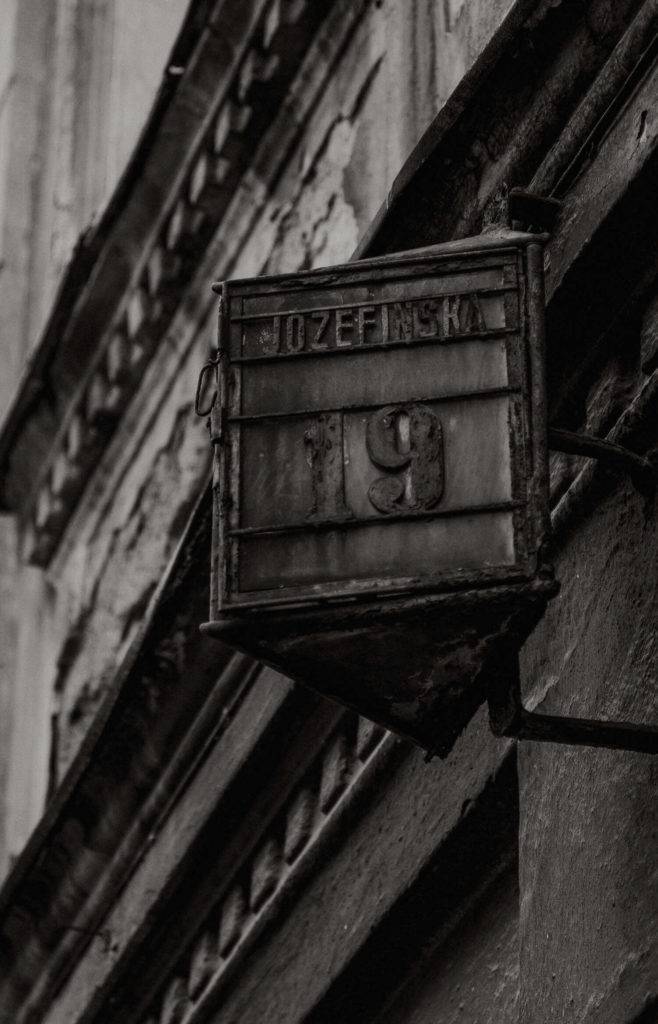
Not many things beat such a strong image, wonderfully portrayed by Steven Spielberg. Yet there are some instants that surpass even the most memorable and magnificent movie moments. That sort of moment that sends that tingly feeling down your spine. That sort of moment that can emotionally completely overpower you.
That sort of moment completely overwhelmed me when recently visiting that very same Jewish quarter on a Krakow walking tour. While strolling around the streets of the Jewish quarter, that very same moment from Shindler's List flashed through my memories. For an instant I felt like I got struck by lightning. The whole area already exhumes raw emotions and when your brain takes you for a trip down on memory lane towards that very same moment you watched Schindler’s List as a 12-year old, it only reinforces your entire experience.

I turned more silent than I already was that day. I felt melancholic and even a bit sad. At the same time I felt privileged of being able to walk around in such a historically rich environment. Not having to worry for my safety, not for a single minute. So much changed in the world since World War II. But we should never take our current world for granted.
Our free walking tour of Krakow, Poland
Krakow’s Kazimierz district, is one of the most culturally and historically rich parts of the city, and is home to the ancient Jewish quarter. Jewish inhabitants flourished in this part of Krakow for centuries until they were forcibly relocated in 1941 by the German occupying forces into the Krakow ghetto, located across the river in Podgórze. This self-guided Krakow walking tour explores these both districts, offering a fascinating insight into the history of Poland and its Jewish community.
Where to stay in Kazimierz
Krakow has many amazing places to stay to be honest but we preferred to stay outside of the more frequently visited Old Town and instead opted for a stay in Kazimierz. Hotel Puro Kazimierz was excellently located as a starting point for this Krakow walking tour through Kazimierz and the former Jewish ghetto.
Click here for pictures and check prices for Puro Kazimierz
Kazimierz: The Jewish District
Between June 1942 and March 1943, a part of lively Krakow died: so many innocent people got killed or families got separated. Yet, Jewish culture has never never flourished more Krakow than it does today. In fact, no other place in Europe has preserved a sense of pre-war Jewish culture better than Kazimierz in Krakow. As a result, many Jews are returning to Krakow, claiming and embracing their heritage and filling Kazimierz with life again. The return of contemporary Jewish culture in the area has begun!
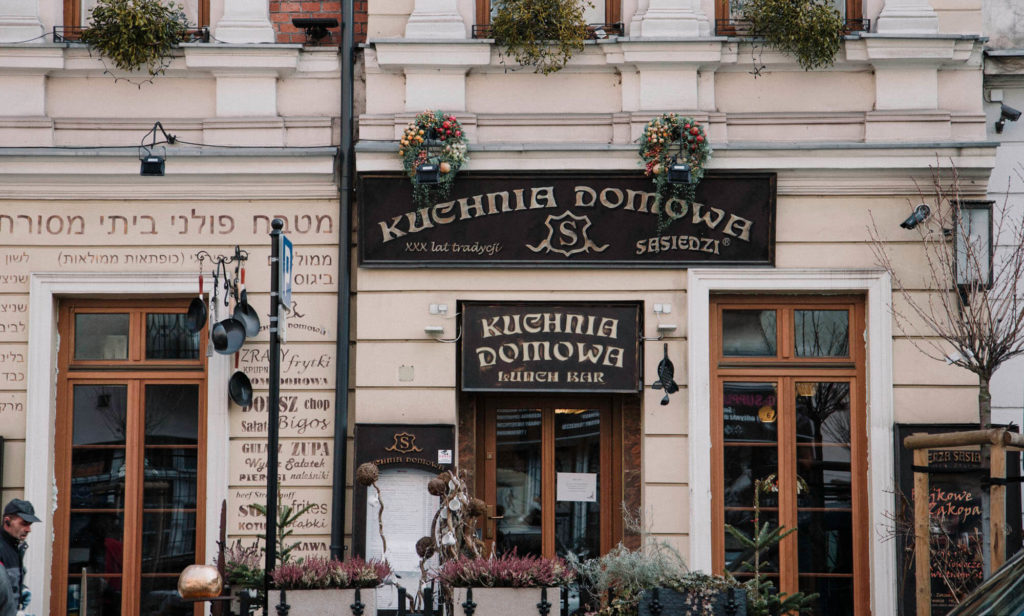
Standing outside the Old synagogue in Krakow's Kazimierz district, I can hear the thumping rhythm of drums and guitars drifting from the different bars and restaurants in the neighborhood. Kazimierz, the district that was systematically destroyed during World War II, is alive once more.
This part of our Krakow walking tour - north of the Vistula river - takes you through the historic Jewish District where Krakow Jews lived before the atrocities of World War II took place. Some of the most remarkable sight are the New Jewish Cemetery, a place where prominent Jews were buried in the 19th and 20th centuries and the Old Synagogue, the oldest remaining example of Jewish architecture in Poland.
Kazimierz is the perfect place to stroll around and take it all in. While it doesn't boast any famous attractions, Kazimierz offers a peak into pre-war Jewish life. Traditional façades with Jewish symbols can be found throughout the streets of Kazimierz and go hand in hand with the current modern arts colourfully displayed on concrete.
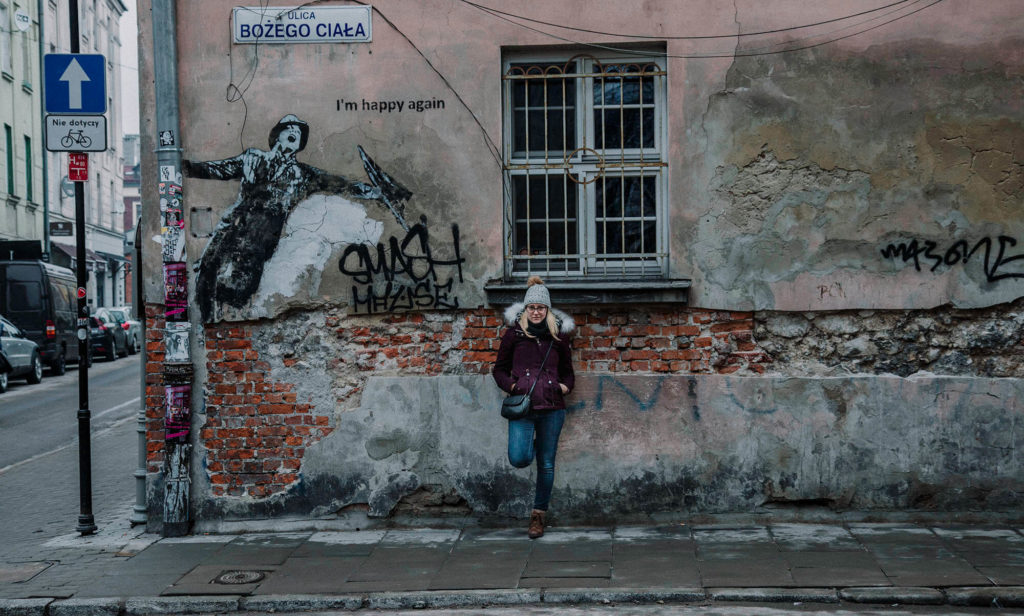
The Jewish district also houses some incredible bars and restaurants. Our favorites while exploring Krakow were:
- Barka – We were so sad to have missed dinner at Barka, it was highly recommended by locals! The laidback atmosphere, ambient decorations and great menu were to guarantee a great evening out.
- Hamsa – While in the Jewish Quarter, why not enjoy the multi-flavored Middle Eastern kitchen? The menu brings together typical Israeli dishes like shish kebab, Moroccan lamb with couscous, baked eggplant with bulgur, and the Palestinian dessert Knafeh.
- Alchemia od Kuchni – we stumbled upon this lunch spot while strolling around in the Jewish Quarter. The menu is quite short but definitely worth it, it even includes some vegan options! Go there for delicious burgers, quinoa bowls or hummus dips.

Kazimierz: The Krakow Jewish Ghetto
South of the Vistula river is where you'll enter the previous Jewish Ghetto. In April 1940 Kraków’s Jews were ordered to leave Kazimierz, in keeping the his desire for Krakow to be a Jew-free city , and settle across the river. As a result of the resettlement in late 1940, Kraków’s Jewish population was reduced from 65.000 Jews to only 16.000 Jews that were deemed necessary to maintain the economy at the time, with the 50.000-ish others forcibly deported to labour camps like Auschwitz-Birkenau . Their property and possessions confiscated with the exception of what they could carry into the ghetto.

A 3 metre high wall was erected around the confines of the ghetto, crowned with arches conscientiously designed to resemble Jewish tombstones. The remnants of the Ghetto Wall is one of the first sights you'll encounter in this part of Krakow. Four guarded entrance gates accessed the ghetto – the main gate to the ghetto once standing where the present entrance to the Ghetto Heroes square is, coming up from the Vistula river. The Ghetto Heroes Square - with its 33 memorial chairs of iron and bronze - symbolizes the tragedy of the Polish Jews.

Many Jews also worked outside the ghetto, particularly in the Zabłocie industrial district, which included Oskar Schindler’s factory at ul. Lipowa 4. Do not skip a visit to Oskar Schindler's Museum ! It's conveniently located on this walking route and will provide you with.

The rest of the walking tour will take you along some of the most tragic places in Krakow like the entrance to the sewers Jews used to escape Krakow and the ghetto. It's hard to comprehend what the people living here had to go through but the voice of guide can put some much needed context to é seemingly innocent sewer lid. If you like to explore the Jewish Ghetto with a guide, you can check out this tour and this one as well. Both come highly recommended!
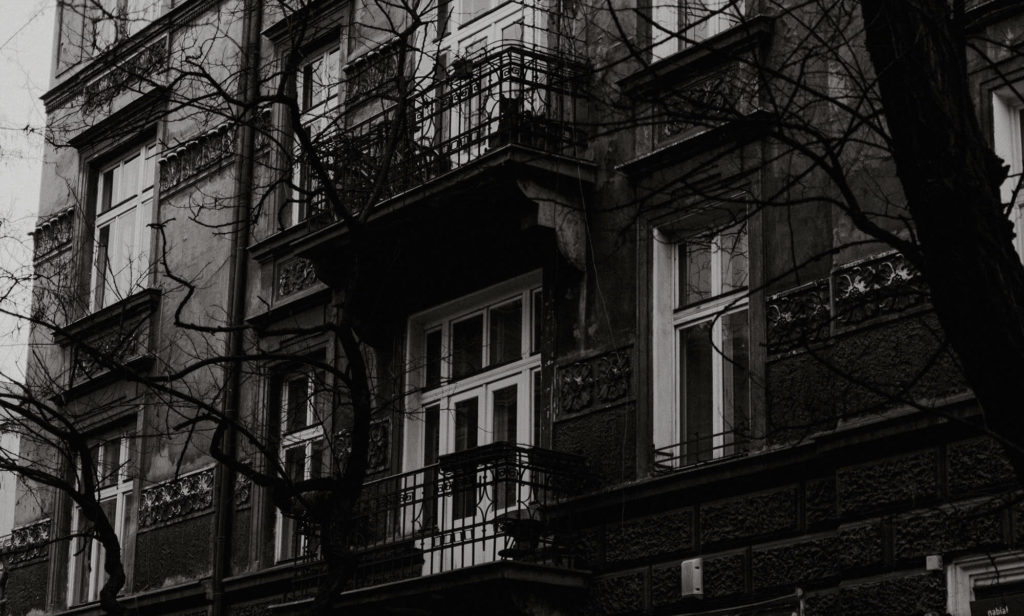
The call of the Negev Desert: the ultimate Israeli desert road trip

Self Drive geyser del Tatio: the best tour in San Pedro De Atacama
Cancel reply.
Your email address will not be published. Required fields are marked *
Privacy Overview
29.03.2022, 10.00
Online Guided Tour Through the Area of the Former Krakow Ghetto

Led by: Ewa Węgrzyn Online event
Zoom link: https://us06web.zoom.us/j/83575174896
We would like to invite you to an online guided tour through the area of the former Krakow Ghetto, which will take place on Zoom.
The Krakow Ghetto was established in March 1941 in Krakow’s district of Podgórze. The prisoners of the ghetto were mainly Krakow’s Jews. In 1942 deportations began and in 1943 the ghetto was liquidated.
During this online guided tour Dr. Ewa Węgrzyn (Jagiellonian University) will show us various places that are located in the area of the former ghetto and will tell us more about its history.
In cooperation with the Association of Cracowians in Israel.
Part of the events commemorating the liquidation of the Krakow Ghetto.
In Hebrew. Free admission.

Krakow Jewish Ghetto Tours – tickets, prices, discounts, opening hours, what to expect, FAQs

Krakow, a city adorned with iconic attractions such as the Church of St. Peter and St. Paul, the Polish Aviation Museum, and Schindler’s Factory, holds a rich cultural heritage.
However, its intricate tapestry also reveals a haunting past, which comes to light through the profound narratives shared during Krakow Jewish Ghetto tours.
During World War II, Kazimierz, Auschwitz, and Podgórze were built into Jewish ghettos upon the German occupation of Poland.
The Jews were crammed in these districts, with some even living on the streets and forced to work in factories under inhumane conditions.
The Krakow ghetto tour offers a gripping journey through various corners of the city, recounting the chilling events of its history.
This article covers everything you must know before booking tickets for the Krakow Jewish Ghetto Tours.
Top Krakow Jewish Ghetto Tours Tickets
# Schindler’s Factory Tour with Entrance Ticket # Bike Tour of Old Town, Jewish Quarter and the Ghetto # Kazimierz, Schindler’s Factory & Ghetto Guided Tour
Table of contents
What to expect at krakow jewish ghetto tours, where to book tickets, how do online tickets work, krakow jewish ghetto tours ticket prices, schindler’s factory tour with entrance ticket, bike tour of old town, jewish quarter & the ghetto, kazimierz, schindler’s factory & ghetto guided tour, auschwitz-birkenau tour with kazimierz/schindler’s tickets, jewish quarter and ghetto electric golf cart tour, kazimierz and jewish ghetto tour with synagogues, meeting point for krakow jewish ghetto tours, krakow jewish ghetto tour timings, how long does the tour take, best time to go on the krakow jewish ghetto tour, faqs about the krakow jewish ghetto tours.
Listen to stories about how World War II started, how Nazis occupied Poland, and how Jews were persecuted, on the Krakow Jewish Ghost Tours.
Walk through the less traveled routes and hear spine-chilling stories from the tour guide.
Explore the Old and Remuh synagogues, wander through the vibrant Szeroka Street, pay homage at Ghetto Heroes Square, and experience the poignant Pharmacy Under The Eagle.
During the tour, delve into the history of the WWII Jewish ghetto, discover the profound exhibits at Schindler’s Factory Museum, and contemplate the solemnity of the Auschwitz-Birkenau Memorial and Museum.
Also, uncover the locations featured in the film Schindler’s List and gain insight into the authentic history behind them.
You can take a walking tour, bike tour, and even a golf cart tour based on your comfort and budget.
Back to Top
Tickets for the Krakow Jewish Ghetto Tours are available online or at the venue.
Online ticket prices tend to be cheaper than tickets at the venue.
When you buy online, you can avoid the long queues at the attraction’s ticket counters.
When you book early, you also get your preferred time slot.
Because some attractions sell a limited number of tickets, during peak days they may sell out. Booking early helps avoid last-minute disappointments.
To book tickets for the Krakow Jewish Ghetto Tours, head to the booking page and choose your desired date and the number of tickets you wish to buy.
Upon payment, the tickets will be emailed to you.
You do not need to carry printouts.
On the day of the visit, show the e-ticket on your smartphone and start the tour.
Don’t forget to bring your official IDs.
The cost of tickets for Jewish Ghetto Tours in Krakow depends on the ticket you book.
The Bike Tour of Old Town, Jewish Quarter, and the Ghetto is priced at 84zł (€19) for adults and 77zł (€17) for students between seven and 26 years.
Tickets for Kazimierz, Schindler’s Factory & Ghetto Guided Tour cost 224zł (€50) for adults aged 18 years and above.
Children’s tickets can be purchased at 192zł (€43) for those between seven and 17 years old.
Students aged 18 to 26 years old with valid ID can get the ticket at 210zł (€47).
Children below six years get free admission to the tour.
Krakow Jewish Ghetto Tours tickets
If you’re seeking Jewish ghetto tours in Krakow, we have some recommendations to offer.
For budget-conscious travelers, Schindler’s Factory Museum offers an affordable ticket option. Alternatively, consider the Kazimierz, Schindler’s Factory & Ghetto Guided Tour, which adds additional sites to your travel itinerary.
Addsome adventure to your tour by taking a bike tour of the Jewish quarters, where you will drive to the city’s streets to uncover their history.
Those looking for a more relaxing experience should pick an electric golf cart tour, which allows them to enjoy everything from the comfort of their seats.
For a comprehensive and enlightening experience, choose from the Auschwitz-Birkenau Tour with Kazimierz/Schindler’s option, or opt for the Kazimierz and Jewish Ghetto Tour with Synagogues for an in-depth exploration of Krakow’s rich history.

With this ticket, you get admission to the Schindler’s Factory Museum and access to all the exhibits.
You’ll be accompanied by a guide who will take you to every nook and cranny of the museum, and will share with you some important historical facts.
On the booking page, select the language of the guided tour, and remember the meeting point of the tour will vary based on the language you choose.
Ticket Prices Adult Ticket (18+ years): 101zł (€23) Child Ticket (7 to 17 years): 93zł (€21) Student Ticket (18 to 26 years): 97zł (€22) Infant Ticket (up to 6 years): Free

Sit on the bike, wear your helmet, and embark on a historic tour comprising nearly 25 stops.
Cover the city walls, the Jewish Quarter, Wawel Castle, Jagiellonian University on the bike tour, and areas featured in the critically acclaimed film, “Schindler’s List.
Follow the route of your tour guide and keep hearing stories as you move from one stop to another.
Ticket Prices Adult Ticket (up to 99 years): 84zł (€19) Student Ticket (7 to 26 years): 77zł (€17)

Grab this ticket, explore the Jewish ghettos in Poland, and take a guided tour of Oskar Schindler’s Enamel Factory.
Commence your exploration from the Old Synagogue nestled in the Kazimierz district, a testament to the enduring history of the Jewish community that grappled with the horrors of the Holocaust and other atrocities orchestrated by the Nazis.
Then head to the most popular museum of Krakow, Schindler’s Enamel Museum, and dig into the works and contributions of Oskar Schindler.
End your tour by walking through Jewish ghettos and seeing in what conditions they were forced to live during the World War.
Ticket Prices Adult Ticket (18+ years): 224zł (€50) Child Ticket (7 to 17 years): 192zł (€43) Student Ticket (18 to 26 years): 210zł (€47) Infant Ticket (up to 6 years): Free

Explore the former concentration and extermination camps by visiting the Auschwitz-Birkenau Memorial and Museum.
At the museum, see the gas chambers, belongings of Auschwitz prisoners, and other preserved artifacts.
This ticket offers you two options – a shared or a private tour.
If you pick the shared tour option, your tour ends at the museum, and you’ll be transported back to Krakow.
However, those who select the private tour can see a few more sites upon returning to Krakow, including Krakow’s Jewish Quarter, Oskar Schindler’s Factory, and the Krakow ghetto.
Ticket Prices Shared Tour: 1300zł (€291) Private Tour: 3000zł (€670)

Tour the Kazimierz on an electric golf cart, and from your seats, view over 20 attractions.
From your tour guide, learn about the local Polish culture, Jewish past, and holocaust history.
Drive through the ghettos of Krakow to see the Pod Orłem pharmacy, Ghetto Heroes Square, and many other points of interest.
Ticket Prices Adult Ticket (18+ years): 175zł (€39) Child Ticket (7 to 17 years): 155zł (€35) Student Ticket (18 to 26 years): 170zł (€38) Infant Ticket (up to 6 years): Free

This ticket provides two options – a 3-hour tour and a 4-hour tour.
The 3-hour tour begins in Kazimierz, which will take you to the alleyways where Jews and Poles lived together.
Continue your journey to behold the Tempel Synagogue, traverse the bustling Szeroka Street, and immerse yourself in the history of the Remah Synagogue, accompanied by the poignant presence of its accompanying cemetery.
You can select from the Tempel Synagogue or the Old Synagogue at Szeroka.
Enhance your Jewish ghetto tour experience by selecting a four-hour tour to see either the Tempel Synagogue or the Old Synagogue, the Remah Synagogue, and the Old Jewish Cemetery.
Ticket Prices 3-hour: Kazimierz, Ghetto and 1 Synagogue: 1056zł (€236) 4-hour: Kazimierz, Ghetto, 2 Synagogues, and Cemetery: 1308zł (€292)
Save time and money! Explore 39 museums effortlessly with the convenient 1, 2, or 3-day Krakow City Card . Discover the hidden gems beneath Main Market Square, delve into Oskar Schindler’s legacy, hear the trumpets at St. Mary’s Basilica, and much more!
The designated meeting points for Krakow Jewish Ghetto Tours differ depending on the specific tour you select.
You can find precise information about the meeting points on the booking page when you purchase your tickets.
The Jewish Ghetto Tours in Krakow usually start at 10 am, and you also get the upper hand to select the time slot for the tour.
Irrespective of the starting time of the tour, make sure you reach the meeting point at least 15 to 20 minutes before the tour begins.
The Krakow Jewish Ghetto Tours duration depends on the tour option you select.
You’ll need at least 1.5 hours for a quick tour of Jewish Ghetto while the more elaborate ones take up to 7 hours.
Here is a list of the duration of the tours:
- Schindler’s Factory Tour with Entrance Ticket : 1.5 hours
- Bike Tour of Old Town, Jewish Quarter, and the Ghetto : 3.5 hours
- Kazimierz, Schindler’s Factory & Ghetto Guided Tour : 5 hours
- Auschwitz-Birkenau Tour with Kazimierz/Schindler’s : 7 hours
- Jewish Quarter and Ghetto Electric Golf Cart Tour : 1.5 hours
- Kazimierz and Jewish Ghetto Tour with Synagogues : 4 hours
The best time to go on the Krakow Jewish ghetto tour is during the mornings at 10 am.
During the morning hours, tour guides are notably more enthusiastic and energetic, making it an opportune time to fully benefit from their expertise.
During weekends and public holidays, there is a peak rush, so it is advisable to book tickets for weekdays to ensure an uninterrupted and smooth experience.

Here are some questions guests usually ask before going on the Krakow Jewish Ghetto Tours.
Tourists can buy tickets for the Krakow Jewish Ghetto Tours online or at the venue, on the day of their visit. For the best experience we suggest you book your tickets online , in advance.
Wear comfortable shoes, as a lot of walking is involved on ghetto tours.
Yes! On the booking page, guests can select the preferred language (English, French, German, Polish, Russian, Spanish, Italian) for their tour.
Yes, almost all the tours are wheelchair accessible.
Sources # City-tours.com.pl # Seekrakow.com # Tripadvisor.in The travel specialists at TheBetterVacation.com use only high-quality sources while researching & writing their articles. We make every attempt to keep our content current, reliable and trustworthy .
Popular attractions in Krakow
How useful was this post?
Click on a star to rate it!
This article was researched & written by
Jamshed V Rajan
He is a two-faced traveler, who enjoys both the hustle-bustle of an urban holiday and the serenity of a break from the rest of the World. During some of his vacations, he is a resort hopper, and on others, he barely spends time in his hotel. He loves to try mouth-watering local cuisines, especially non-vegetarian dishes. Favourite Cities: Amsterdam, Las Vegas, Dublin, Prague, Vienna
Leave a Comment Cancel reply
Save my name, email, and website in this browser for the next time I comment.
FireStorm Internet runs this website to provide the most accurate and up-to-day information about tourist attractions.
Our Address
FireStorm Internet, 203, 30C, Bollineni Hillside, Perumbakkam Main Road, Nookampalayam, Chennai, India. Pin Code: 600126
About Us The Team Contact Us Affiliate Disclaimer Content Policy Privacy Policy Terms of Service
Helicopter Tours Madame Tussauds Linq High Roller Summit One Vanderbilt
© 2024 FireStorm Internet

- Places of remembrance
The Jewish ghetto in Kraków 1941-1943
no information found
- Description
- Information
The ghetto, which functioned in Podgórze in 1941–43, bore witness to a savage and tragic stage in the extermination of Kraków’s Jews.
The Jewish community of Kraków before the Second World War consisted of over 64,000 people, which accounted for 25% of the city’s population. After the forced resettlements that were set in motion at the beginning of the war, only 16,000 remained. On 3 March 1941, the occupier issued a decision forcing the Jews into the “Jewish residential quarter” in Podgórze, where they were to move to by 20 March. The borders of the ghetto, though that name was not in official use, ran along the following streets: Kącik, Traugutta, Lwowska, Rękawka, the eastern and northern edges of Podgórze Market Square, Brodzińskiego, Piwna, and Nadwiślańska to Zgody Square (today: Bohaterów Getta Square). The area encompassed 320 tenement houses, previously inhabited by around 3500 people, who were forced to leave the premises, not unlike the enterprises operating within. The only enterprise that the order did not cover was the sole pharmacy on the premises of the ghetto, run by Tadeusz Pankiewicz, a Pole who soon became the only non-Jew living within the area ( The Eagle Pharmacy ).
The “Jewish residential quarter” was surrounded by a three-metre wall with an arcaded upper portion mockingly styled to resemble matzevahs: Jewish tombstones. There were four gates leading into the ghetto; the main one had an inscription that read Jüdischer Wohnbezirk and it stood where Limanowskiego Street enters the Main Market of Podgórze.
There was a tram going along Lwowska and Limanowskiego streets, yet there were no stops inside the walls, and the passengers were forbidden even to look at the ghetto through the windows. (The prohibition was obviously broken, and even parcels with food happened to be dropped from the tram.) As of October 1941, any departure from the ghetto without leave became punishable by death. The same penalty could be imposed on people helping fugitives. Soon postal services were forbidden, and all the ground floor windows on the non-Jewish side were bricked up, which cut the ghetto off from these channels of food delivery. Hunger reigned supreme in the overpopulated district, forcibly separated from the rest of the city.
Soon deportations to death camps and forced labour camps (notably the Płaszów camp situated nearby) began in the ghetto. Exceedingly brutal resettlements were conducted in June and October 1942. At the time, many people died in the streets of the ghetto during the roundups and transports. Their number included two notable artists who had befriended each other: the painter Abraham Neuman and the folk singer and poet Mordecai Gebirtig, executed on the so-called “bloody Thursday” on 4 June 1942. Patients of hospitals and children from the orphanage, which also became home to the children of working parents, were murdered on the spot or deported. Some of the deported were executed over the mass graves prepared by the inmates in Płaszów.
In 1942, the area of the ghetto was repeatedly reduced. Shortly before the end of the year, it was bisected with barbed wire: precinct A was designed for able-bodied people capable of labour, while B was for children, the elderly, and the ailing.
Finally, on 13 and 14 March 1943, the Nazis conducted the final liquidation of the Kraków ghetto. Around 6000 residents of ghetto A, capable of heavy labour, were moved to the camp in Płaszów. Their children under 14 had to stay in the orphanage. On the following day, the residents of ghetto B were driven to Zgody Square. Around a thousand people were shot dead on the spot, the number including the elderly, patients and physicians from the hospital, children and mothers who wouldn’t let them go. Those who remained were taken to KL Auschwitz. The action ended with SS officers searching the now abandoned buildings, murdering anyone who tried to hide.
A memorial of the events stands on Bohaterów Getta Square (literally: “the square of the heroes of the ghetto”, the former Zgody square): sculptures of chairs recall the sight of a deserted ghetto full of abandoned objects and household utensils. Every year the March of Memory is organised on the anniversary of the liquidation of the ghetto. Its participants march from Bohaterów Getta Square to the former Płaszów camp – along the route that led Kraków Jews to death.
The only surviving remnant of the ghetto are two sections of its wall standing in ul. Lwowska and behind the school building at ul. Limanowskiego 60/62.
Plan a stay
First time in Kraków? You don’t know where to start? Make things easier with the planner!
Recommended locations
ul. Tetmajera 28
Kościuszko Mound
al. Waszyngtona 1
St Benedict’s Church
ul. Stawarza
The Jan Matejko House
ul. Floriańska 41
Dragon’s Den
- PLAN YOUR TRIP
- THINGS TO DO AND SEE
Podgorze: Discovering the former Krakow Ghetto
Podgorze is a quiet district of Krakow, located on the opposite bank of the Vistula River coming from Krakow’s Old Town . Until a few years ago Podgorze was quite out of the way for tourists, and it was a rather run-down area.
Today Podgorze is becoming more and more lively, and is a residential area quite popular with young local families. But the main reason to explore the neighborhood is that it was once the Krakow Ghetto , and you can still discover some interesting traces of its turbulent past today.
From the nearby Kraków-Płaszów Concentration Camp to the square that was the heart of the Krakow Ghetto , from the ghetto walls to Schindler’s Factory , a stroll through the streets of Podgorze tells the recent history of Krakow better than anywhere else.
What you will find in this guide to Podgorze:
Things to see and do in Podgorze
What is the best way to visit podgorze and the jewish quarter, how to get to podgorze from krakow’s old town.
Podgorze for many centuries has been an independent city from Krakow, located just beyond Kazimierz, along the important route connecting Krakow with the Wieliczka Salt Mines , once fundamental to the city’s economy.
This neighborhood played a rather marginal role until World War II , when the Nazis decided to move all the Jews from Krakow and surrounding areas there, establishing the Krakow Ghetto .
From 1941 to 1943 the Krakow Ghetto, enclosed within walls (built with ancient tombstones stolen from Jewish cemeteries) and passages guarded by armed soldiers, occupied a large part of the old center of Podgorze.
Over 16,000 people were crammed into an area where only a few families lived before (about 2-3,000 people). In the central square of the Ghetto, what is now called Ghetto Heroes Square (Plac Bohaterów Getta) , round-ups and deportations were regularly held, mainly to the nearby Płaszów concentration camp .
In 1943 the Krakow Ghetto was liquidated and people were transferred to the Auschwitz extermination camp , where they were immediately massacred. Only a few Jews were saved, mainly thanks to the work in Schindler’s Factory , which today is one of the biggest attractions in Podgorze.
After the war, Podgorze was a growing suburb for a long time. Many nice residential areas have sprung up today, and its old center is getting more and more lively.
Remains of the Krakow Ghetto
Although the heart of the old Podgorze district has remained quite the same as it was in the 1940s, today it is quite difficult to find traces of its dark past.
The wall surrounding the Krakow Ghetto was in fact demolished immediately after the liquidation of the ghetto, and today only a small fragment remains. You can see it at 29 – 30 Lwowska Street, or you could take a look at the lesser known one, which is located at 60 Limanowskiego Street, just behind a public school.
Many of the buildings in the area have many stories to tell, some were prisons, others were secret police headquarters, offices from where the Nazis administered Ghetto life, hospitals and sanatoriums for infectious patients. Other houses were dens of partisans and underground resistance organizations, for example just adjacent to the central square was a safe house of the Jewish Fighting Organization (ZOB).
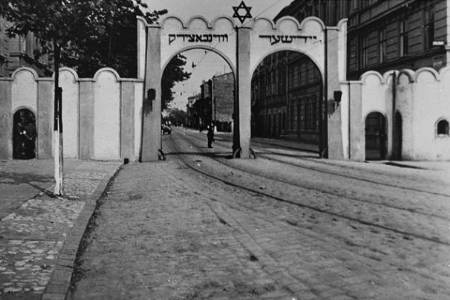
To discover all the secrets of the Krakow Ghetto, you can join a historical tour of the area , or one of the free walking tours that allow you to have an overview of Podgorze and Kazimierz .
The heart of the ghetto was what is now called Ghetto Heroes Square (Plac Bohaterów Getta) . The roundups took place here and this is the place where during the liquidation of the Ghetto people were forced to leave for Auschwitz. Today in Ghetto Heroes Square there is an installation known as Krakow Chairs , 70 metal chairs that recall the sad past of this place.
Right adjacent to Ghetto Heroes Square is Pharmacy under the Eagle (Apteka pod Orlem) . This pharmacy remained the only one operating in the entire Ghetto, and its owner Tadeusz Pankiewicz was the only Pole to be allowed to stay there. While they all shut down their business, he decided to stay and help the Jews. The pharmacy appears in the film Schindler’s List and its story is told in the book “The Krakow Ghetto Pharmacy” .
Schindler’s Factory
One of the symbolic places of Podgorze is Oskar Schindler’s Factory in Lipowa Street n. 4, in the Zablocie district, once an abandoned industrial district which is now becoming a modern residential district.
Oskar Schindler’s Factory was a large industrial complex owned by a German entrepreneur, Oskar Schindler, who had taken advantage of the Nazi occupation to set up an enamelware factory there.
The factory mainly used Ghetto Jews as labor, and over time it became a sub-camp of the Płaszów labor camp . Oskar Schindler witnessed the Nazi atrocities and decided to help as many Jews as possible. He managed to protect them by making them work for his factory, and having them moved to a new factory when the Ghetto was liquidated. He thus managed to save over 1000 lives .
Today Schindler’s Factory is one of the major attractions to visit in Krakow. Inside you can visit an interesting museum about the life of the city during the years of the Nazi occupation. There are excellent guided tours that allow you to visit Schindler’s Factory and the Krakow Ghetto at its best.

Płaszów Concentration Camp
Rather off the beaten path, beyond Krakus Mound, is the scenic Liban Quarry , a huge and terrifying abandoned limestone quarry. During the Nazi occupation this was one of the main forced labor camps of the Płaszów concentration camp .
Immediately after the rather unsafe abandoned quarry there is a hill with vast meadows, where the barracks of the Płaszów concentration camp stood. Many scenes from the film Schindler’s List were also filmed in these places.
The Red House is also easily recognizable, that is the house of Amon Goeth , the ruthless commander of the concentration camp, who in the film is also shown in the famous scene where he enjoys shooting Jews from the balcony of that house. The balcony in question is located in the back of the house, but a few years ago the current owners renovated it and transformed it into a private villa.
A few steps away it is still possible to see the Gray House , which has remained quite unchanged, another place of the horrors of the Płaszów concentration camp. Here was the office of the camp commander Amon Goeth (in the film Schindler’s List, unlike the real story, this is Goeth’s villa) and here were the cells for the most cruel punishments for the prisoners of the camp.
Little else remains of the Płaszów camp . In January 1945 the Nazis destroyed it, transferring the remaining prisoners to Auschwitz with a death march.
To visit the Płaszów concentration camp it is highly recommended to go there with an expert guide , because it is the only way to fully understand the history of the place and the tragic events of the Krakow Ghetto.
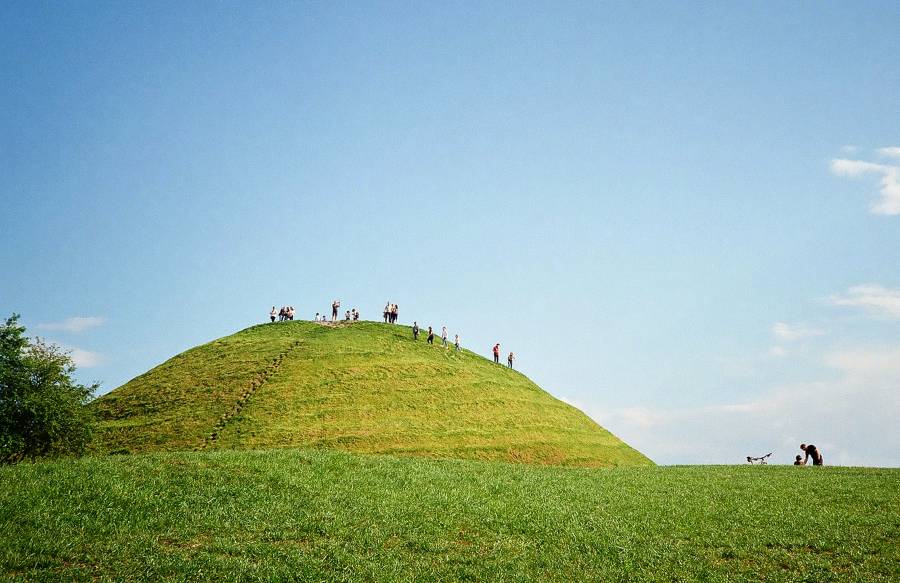
Krakus Mound
Krakus Mound is one of the most mysterious places in Krakow. It is a cairn of 60 meters in diameter and 16 meters in height, which rises right above the Podgorze district, near the Podgorski Cemetery.
Its origins are unknown, as well as its original functions. According to legend, Krakus Mound could be the tomb of King Krakus , the mythical founder of Krakow. However, archaeological investigations that took place in the 1930s did not find human remains inside.
Its origin appears to be very ancient indeed, and seems to date back to prehistoric times. Similar to other artifacts, such as those at Stonehenge, Podgorze’s Krakus Mound may have been built by the Celts. In fact, when viewed in the context of the other prehistoric mounds around the city, they seem designed with astronomy in mind, to signal some important Celtic feast days.
To visit it you have to follow some paths near the Podgorski Cemetery, in the area near Płaszów, or follow the paths that from the ancient Fort Benedict , located in the beautiful park behind the ghetto wall, lead to Płaszów and to the Krakus Mound, well visible even from a distance.
From the top of Krakus Mound you can enjoy a nice view over Krakow, I recommend you to go there at sunset as it is quite scenic.
Rynek Podgórski: the old center of Podgorze
When you come from Kazimierz to Podgorze via the two most famous bridges in Krakow, the new and spectacular Father Bernatek’s Bridge and the historic Most Marszałka Józefa Piłsudskiego , you will most likely arrive right in the heart of one of the most beautiful corners of Podgorze, its old center, which has kept the charm of the old days rather intact.
This area is not very popular with tourists, but mostly with locals. However, a lot of nice places to eat or drink recently have sprung up, mostly concentrated around Rynek Podgórski , the large triangular square in the center of the Pogorze district.
Just adjacent to the square you can find a great authentic milk bar, Bar Mleczny Południowy , which serves good and cheap simple Polish cuisine.
The beautiful church overlooking Rynek Podgórski is St. Joseph’s Church , a neo-Gothic masterpiece dating back to the early 1900s.
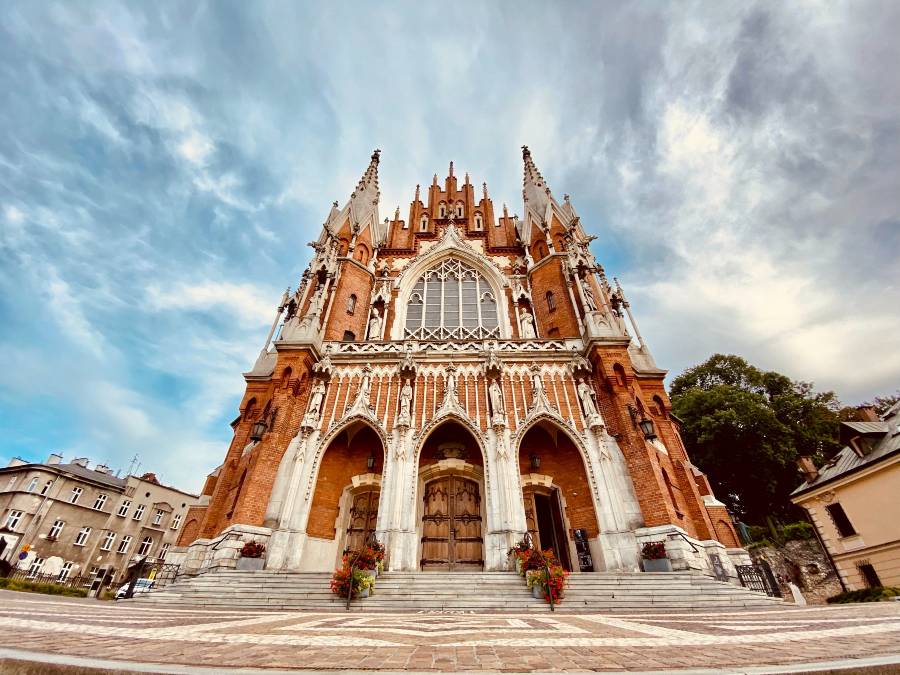
Podgorze can be easily explored on foot, a good choice can be to visit it together with the old Jewish quarter of Kazimierz.
In fact Kazimierz and Podgorze are not only adjacent (just cross one of the bridges over the Vistula), but they are also tragically connected: Kazimierz was the old Jewish quarter for centuries, while Podgorze became tragically known for the Krakow Ghetto during the Nazi occupation.
The best way to visit Podgorze is with a local guide : at a superficial glance it might seem just an anonymous suburb, with little or nothing of interest to see. An expert guide will allow you to understand well what you see, and the history behind the most important and mysterious buildings in the neighborhood.
I recommend a great guided tour (perfect for history buffs) which includes a visit to the Płaszów Concentration Camp and Schindler’s Factory . Alternatively, you can join one of the free walking tours that take place almost every day, but remember to reserve your seat ahead of time.
☞ Read our guide to the Best Free Tours in Krakow
You can get to Podgorze on foot, passing through the Kazimierz Jewish Quarter and crossing the Vistula River on the Bernatka Bridge (Father Bernatek’s Bridge) or, if you are coming from Wawel , the fastest route is via the Piłsudskiego Bridge. On foot it takes about 30 minutes from Wawel.
Alternatively you can take trams 8, 10 and 13 and get off at the Korona stop, near Rynek Podgórski . Or to and from Plac Bohaterów Getta you could take trams 3 and 24, which take you to the opposite side of the old town and stop in front of the central station. If you have the City Pass Krakow Card , tram and bus rides are free for you.
Things to see and do around Podgorze
Podgorze is within easy reach of the Kazimierz district, the former Jewish Quarter , one of the liveliest and most picturesque districts of Krakow.
From Podgorze with a short walk you are in the heart of Krakow’s Old Town and all the main attractions. Check out our must-read list of the Best Things to Do and See in Krakow .
Planning your trip to Krakow? Then these will come in handy:
- Krakow Travel Guide: Things to do in and around Krakow
- All You Need to Know Before Going to Krakow (Best Tips for Planning Your Trip)
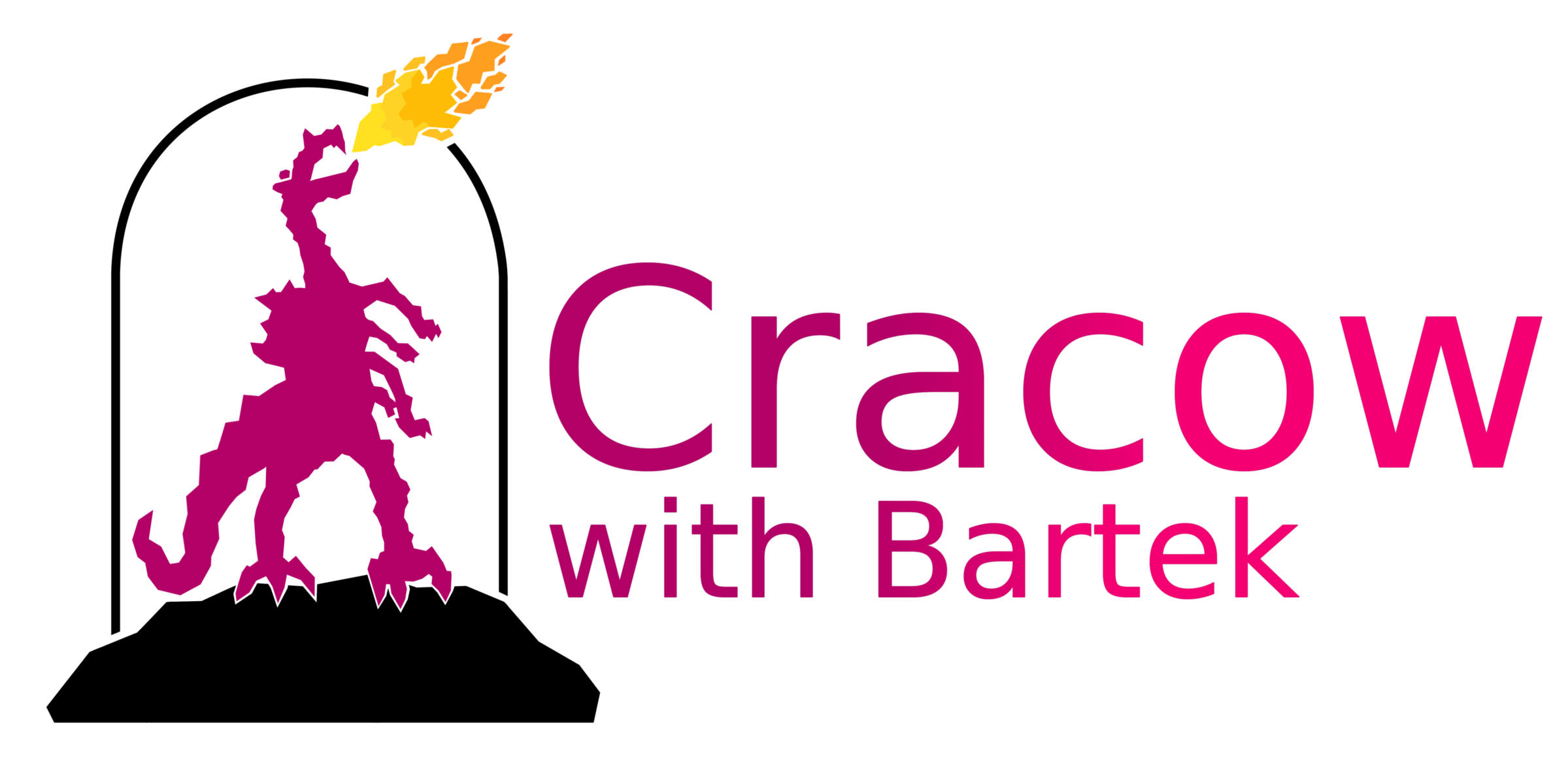
Jewish District and Ghetto Guided Tour in Krakow
Discover the city with the local guide. Find out more about rich jewish culture in Krakow and see the traces of „Schindler’s List” by S. Spilberg. Walk through the jewish quarter with its remarkable Klezmer music. Hear the stories about the former jewish ghetto and Oskar Schindler
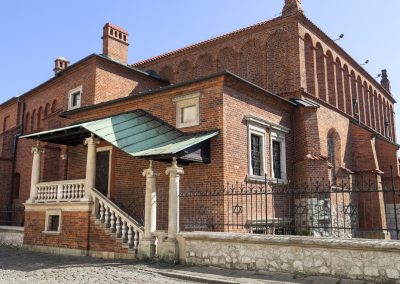
Reasons to book this tour:
- Find out the stories about the former jewish ghetto and Oskar Schindler
- Visit jewish Remuh synagogue with old cemetery
- Hear Klezmer – traditional jewish music in the streets of Jewish quarter
- Get lost in the narrow streets of the jewish district
- Have a quick break in the middle for delicious ice cream
- Admire rich heritage of the Jewish culture
- See The Ghetto Hero Square and the Factory of Oscar Schindler
- Cross the lovers’ bridge and admire its levitating sculptures over the bridge
Duration: 3 hours
Price: 120 eur or equivalent in a different currency, type of the tour: walking, private only, included: * my services as your private guide, * guest pick-up * local recommendations * delicious ice cream, excluded: * entrance fees during the tour, meeting point: your hotel, rail station, monument/building or address, description:.
Jews started to come to Krakow in the medieval time. There was one of the biggest Jewish communities in Poland before the second world war. Holocaust was a catastrophe for the polish citizens who were Jews. In Krakow most of the Jews were killed. At the present time klezmer music – typical Jewish music can be heard again in the Jewish district.
Kazimierz was established in the 14th century. It is named after the polish king Kazimierz the Great. Kazimierz was a separate city out of Krakow where most of the Jews lived. They built many synagogues and it is still possible to visit it. Nowadays Kazimierz is a district of Krakow.
During World War Two Nazis built separate places for the Jews – ghetto. Ghetto was located in Podgorze on the other side of the river. In Podgórze you can find Oskar Schindler’s Factory. The history of Schindler was filmed by Steven Spilberg. The movie was shot in Cracow.
Plan of the tour
Your Hotel, Rail Station, Monument/Building or Address
Holocaust Memorial Monument
Remuh synagogue, family house of helena rubinstein, szeroka street and the the old synagogue, schindler’s list, local ice cream, former jewish slaughter house, love bridge, former jewish ghetto, ghetto heroes square, schindler’s factory museum.
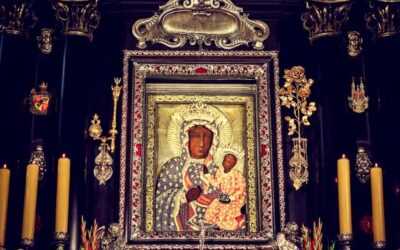
Czestochowa and Black Madonna’s Shrine
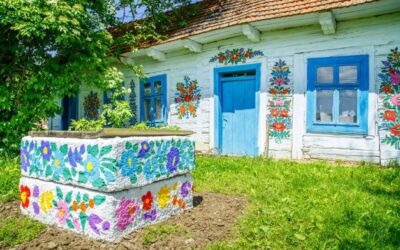
Zalipie – Folk Art Flower Village
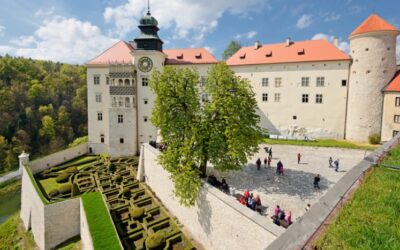
Eagle Nests trail and Ojcow National Park
- Traditional Polish Food Tour
- Traditional Polish spirits tasting
- The Old Town and the Jewish Quarter in one guided walk
- Schindler’s Factory and Ghetto Tour
- The Old Town and Market Square Underground guided tour
- Nowa Huta – a guided tour of a utopian socialist city
- Private Tours

Schindler’s Factory and a guided walking tour of the Kraków ghetto
About the tour.
Our 3-hour tour with a licensed museum guide of Oskar Schindler’s famous “Emalia” Factory and the former Jewish ghetto site provides a splendid occasion to discover the Kraków Second World War history .
The tour starts with a visit to Schindler’s Factory , the most visited museum in Kraków. While visiting the permanent exhibition “Kraków – czas okupacji 1939-1945” (Kraków – The Occupation 1939-1945), complimented by a professional guide narration, we shall become comprehensively acquainted with the history of the war-time German occupation of Kraków. The exhibition brings us up to date with the fate of Poles, Germans, and Jews in occupied Kraków – from the outbreak of war to the questionable “liberation” of the city by the Red Army in January 1945.
Equipped with the knowledge acquired at Schindler’s Factory, we will set out for the former Krakow Ghetto – a residential area created by the occupants for the Jewish population in 1941. The locations and historical events discussed in the museum will be shown by our guide in the authentic surroundings in which they took place. Visiting the “Emalia” Factory and the ghetto in one tour allows you to fully grasp and understand the complicated fate of Kraków and its inhabitants during World War II.
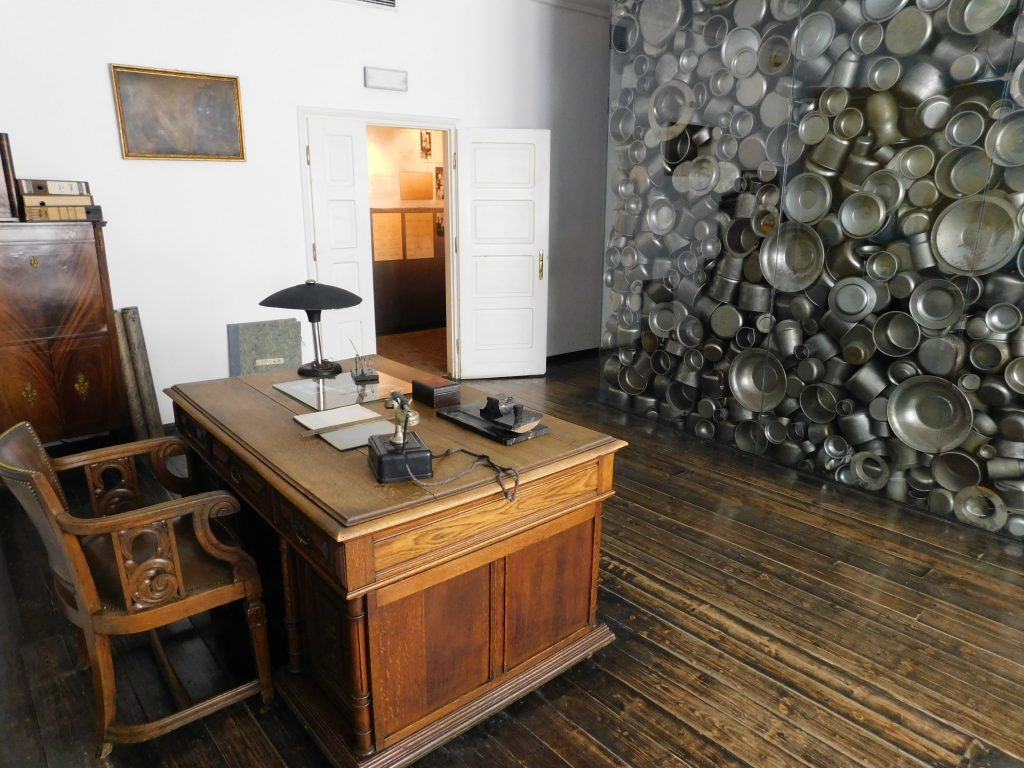
Tour details
- Duration: 3 hours (the tour of the Schindler’s Factory takes about 1.5-2 hours, while the ghetto stroll lasts an additional 1-1.5 hours)
- Meeting point: Lipowa st. 4, in front of the main entrance to the Schindler’s Factory museum ( see the map )
- End point: Rynek Podgórski (1 km from the Schindler’s Factory, see the map )
- Price indludes: professional licensed tour guide in the museum and ghetto site, entrance tickets
- Price excludes: tips/gratitutes
Do you need help?
Call us +48 12 346 38 99 Text us on WhatsApp +48 728 448 109
Krakow Jewish Quarter The Most Comprehensive Guide There Is
Wandering around beautiful little streets of Krakow you may have noticed a place that looks a little bit different from the rest of the city. It attracts with its one of a kind atmosphere, special-looking streets, and buildings that are unique.

What is this place? It’s Kazimierz – Krakow Jewish Quarter!
In this post I’m going to show you:
– a brief history of Jews in Kazimierz – things you must see in Krakow Jewish District – best places to eat, drink and have fun
Are you excited?
Kazimierz, Krakow – map
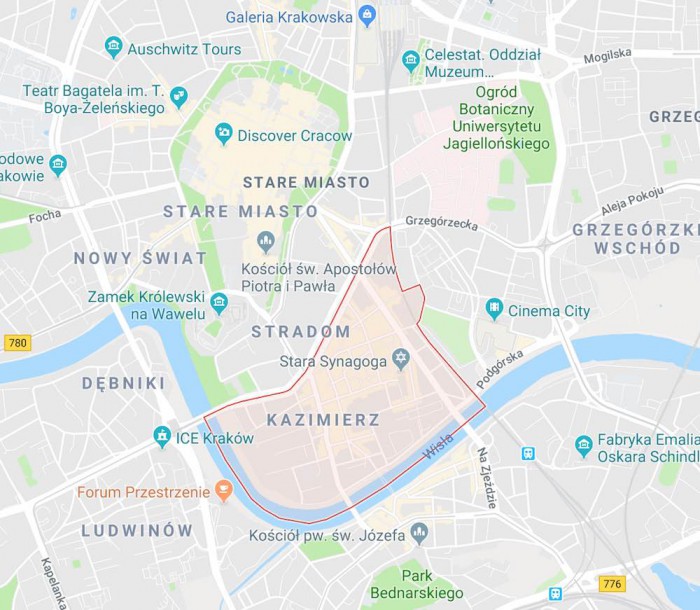
Former Jewish District is located South to Old Town and is naturally bordered with Wisła.
The brief history of Jews in Krakow
Jews started to settle in Krakow in the twelfth century and since then their activity has been expanding. Since the fifteenth century, they have been living mostly in one part of Krakow – Kazimierz .

Jews in Krakow before World War II
- About 64 000 Jews lived in Krakow before the war.
- They worked as bankers, merchants, they were owners of popular restaurants, cafes and bars and they were the best craftsmen in the city.
- Jewish communities spoke and wrote in Hebrew and Yiddish and led rich cultural and religious lives, spending time in synagogues and houses of prayer.
- They were extremely active in Krakow , where they built 6 synagogues. Furthermore, Kazimierz was an ideal of a Jewish community for the rest of Poland.
World War II
This is for sure the most dramatic and heartbreaking time for Jews in Poland.
- Since 1939 they were displaced from Krakow.
- In 1941 Jews were forcibly removed from their homes and relocated to Podgórze which became a ghetto that was completely closed off from other parts of the city.
- Starvation, death, and misery followed, most who survived were killed during the liquidation of the ghetto or moved to concentration camps ( Auschwitz, Dachau ) where the chance of survival was close to none.

After the war
Only 10 percent of Cracovian Jews (3 000-4 000) survived the war, a lot of them with the help of Oskar Schindler . The awful crime known as the Holocaust led to a truly great loss of culture. Most of Jews who survived never returned to Poland.
What is interesting is how the very small population of Jews in Kraków have revived their cultural identity within the city and how Kazimierz has become a place of their cultural significance.

You can visit this place and feel this special atmosphere.
What to see in Kazimierz Jewish Quarter?
Now that you know a little bit about the history of Kazimierz Krakow District, you probably want to see it for yourself.
What is extremely worth seeing?
Are there any fun things to do in Kazimierz?
I’m here to help you answer these questions.
The Old Synagogue
Is the oldest synagogue in Krakow and the most important religious center in Krakow Jewish District . Let the stunning architecture charm you and feel the atmosphere of a five-hundred-year-old tradition.
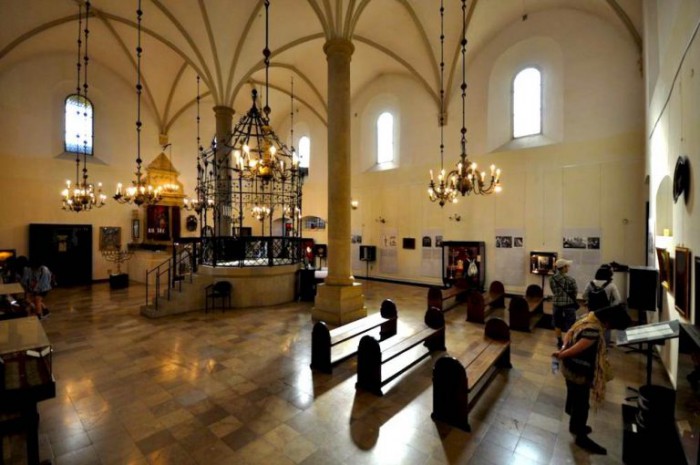
Jewish Galicia Museum
…was someday an old warehouse in Kazimierz Krakow District. The museum has an exhibition of over 140 pictures which show the tradition and lives of Polish Jews.
Photographs are extremely moving and thought-provoking and it’s very interesting to see how these people lived and prospered.

Museum of Municipal Engineering
Now a proposition for technology lovers.
This museum shows exhibits connected with public transport, cars, and electricity. Especially worth seeing is an exhibition of old trams at Św. Wawrzyńca . This collection is currently the largest and most representative of all Polish collections of historic rolling stock.

Ghetto Heroes Square
Was once the biggest open space in Krakow Getto and was at once the source of the residents’ greatest relief. It was also the site of families being torn apart, mass deportations to the death camps, beatings, and executions.
The square was a scene of their greatest horrors and humiliation.
Today, we can honor the memory of these people by looking at the 33 monumental chairs and 37 regular chairs made from iron and bronze lined up in rows to symbolize the tragic death and the empty seats that the residents of the ghetto left behind.
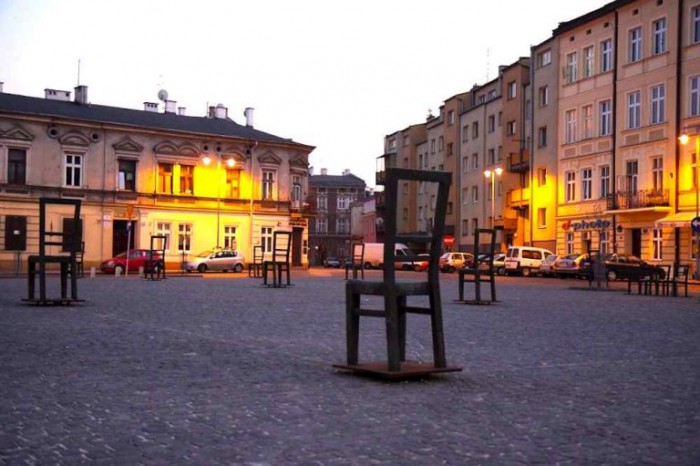
Streets of Kazimierz Jewish Quarter
Kazimierz is a special part of Krakow. It looks different, it feels different. You can still feel an extraordinary atmosphere that Jews left behind. Some places look exactly like they did a few decades ago.
It was in Kazimierz Jewish District where Steven Spielberg decided to shoot “ Schindler’s list “.
Walk around Szeroka street, explore the goods of the New Square and indulge in this one of a kind atmosphere! If you'd like to have a walk with the guide, check our Jewish District Walking Tour!
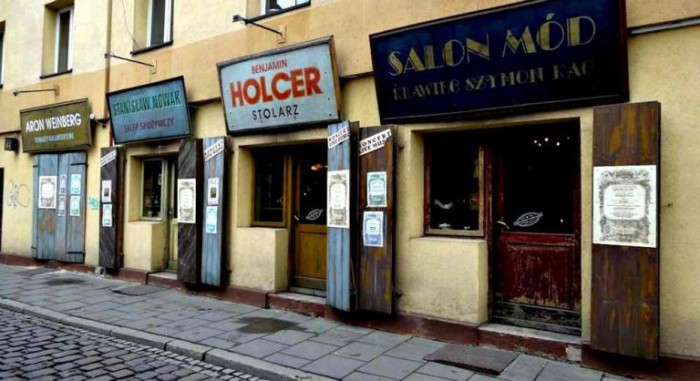
Best bars in Kazimierz
When you’re done sightseeing, it’s the perfect time to relax and explore Krakow nightlife , especially some extraordinary places in Kazimierz. Bars there are unique and have this special something that makes you not want to leave.
No idea where to go?
Don’t worry, I’m here to help you:
Królicze oczy – Estery 14
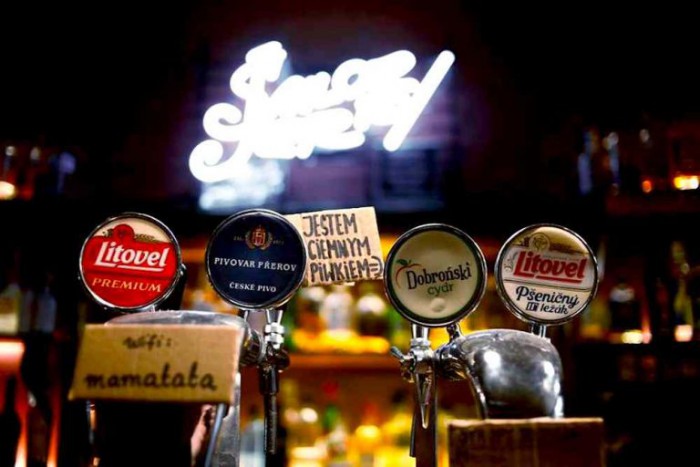
An extremely atmospheric place with a variety of beers to choose from.
Les Couleurs – Estery 10
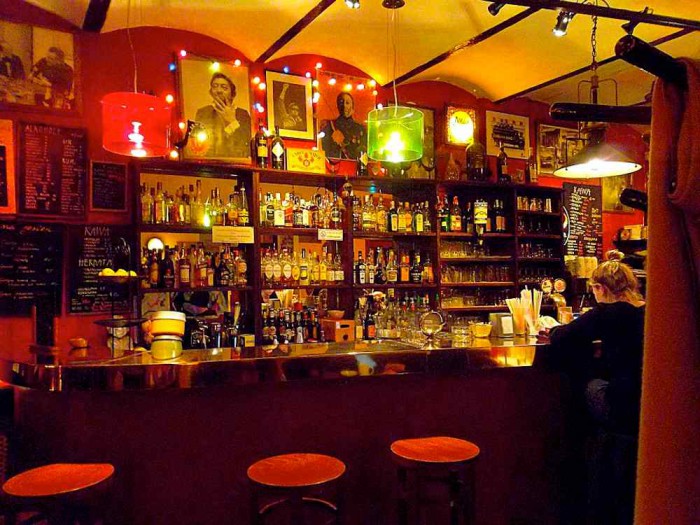
Apart from great food and beverages this place charms with a great collection of posters which you can stare at the whole night!
Best cafes in Kazimierz
Need a refreshing dose of caffeine? Looking for an atmospheric place? Cafes in Kazimierz are the perfect place for that!
Mleczarnia – Beera Meiselesa
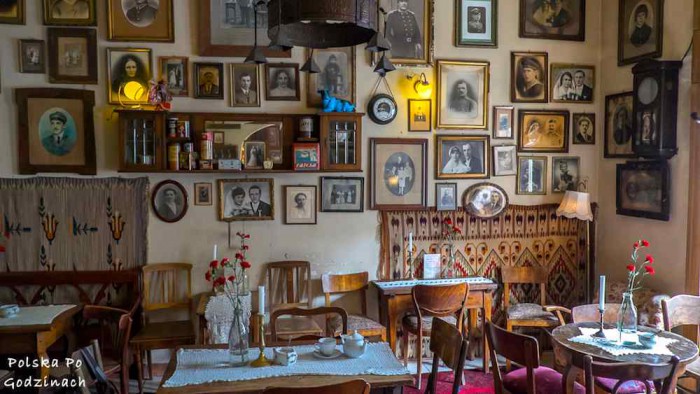
Mleczarnia’s atmosphere is truly one of a kind due to its stunning, old-fashioned decor.
Alchemia – Estery 5
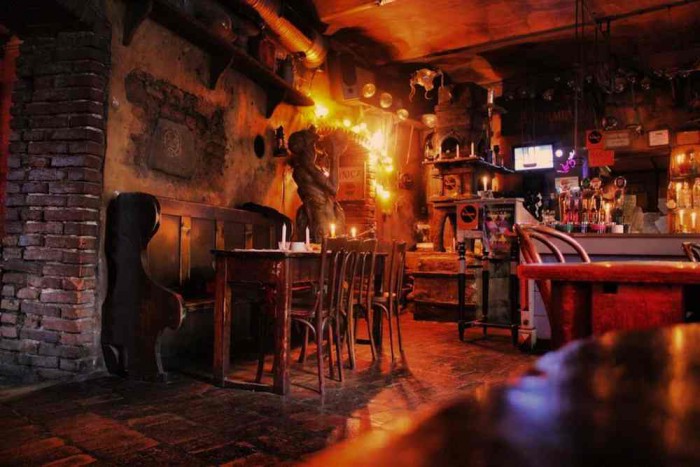
There’s no other place like this. A little bit of darkness and mystery makes Alchemia inimitable.
The most popular choices

Best restaurants in Kazimierz
Feeling a bit hungry? Let’s try the most creative places in the district!
Singer – Estery 20
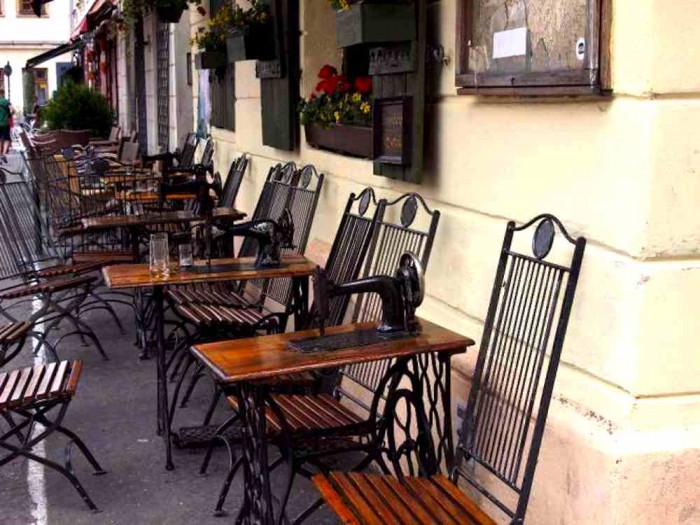
Singer is a classic when it comes to restaurants in Kazimierz. It has an amazing decor – tables made of sewing machines can take you a few decades back!
Ariel – Szeroka 18
The outside of this place is outstanding and makes you feel the spirit of Jewish communities!
Street food in Krakow Jewish Quarter
Traveling on a budget? Kazimierz won’t disappoint you with its various street food places!
Okrąglak – Plac Nowy 4B
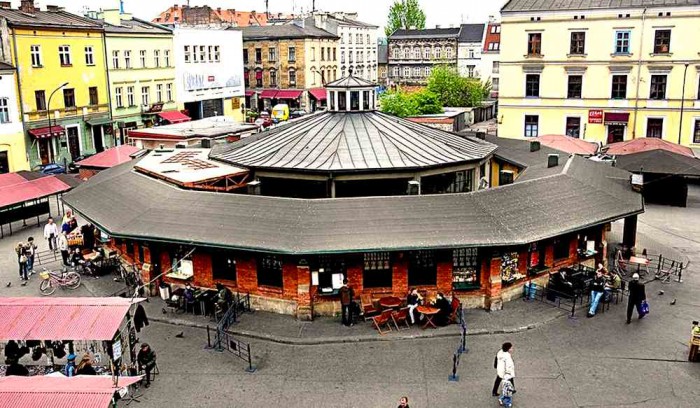
A classic among street food places, loved by locals and tourists.
Andrus Food Truck – Św. Wawrzyńca 16

You have to try delicious traditional Cracovian “Maczanka”!
Plan of a walk through Kazimierz
You are probably wondering where to start and what is important to see in the Jewish District.
I’ve got that covered!
Krakow Jewish Quarter is waiting for you!
As you can see, Kazimierz is offering you an amazing history lesson, beautiful streets, interesting museums, atmospheric places, delicious food and, most importantly, an inimitable atmosphere that you won’t stop talking about!
It is also essential to see what the tragedy of war has done to Polish Jews . Their lives, as well as their rich culture, disappeared, never to come back. Visiting places that were important to them is a way to honor their memory .
A trip around Krakow Jewish District is a perfect way to disconnect from the daily life and indulge in a completely different world with plenty of great things to explore!
Check out our other posts if you want some more information on things to do in Krakow .
Are you excited to go there? Or maybe you’ve been there before?
Tell me in the comments below :)
Add new comment

This site uses cookies.
By using this website, you agree to our use of cookies in accordance with your browser settings. You can learn more about the purpose of cookies and how to change your browser settings. Learn more ›

Kazimierz Old Jewish Quarter in Krakow. Worth a visit? Definitely.

Even though its streets and architecture may seem to be a bit run-down and neglected, Kazimierz has its own irreplaceable atmosphere that can hardly be compared to any other place in Poland. The Jewish Quarter in Krakow boasts countless symbols of the Jewry, that lived on its premises. Having worked principally in such areas as banking, merchandising, gastronomy, and craftsmanship, the local Jews peacefully developed their community before it was abruptly brought to an end following the outbreak of World War II – the most poignant and dramatic time for the Krakow Jews.
How did World War II change Kazimierz?
Jews arrived in Kazimierz in the mid-14th century, when it was yet a separate town. We can risk saying that they were the ones who created Kazimierz from the beginning of its times. They built several synagogues, owned shops, restaurants, and bars, and worked hard chiefly as bankers and merchants. The Jewish community was strictly devoted to their cultural and spiritual life, following the religious rules set by rabbis and spending time on prayer in synagogues.
Their harmonious existence was brutally interrupted by Nazi Germany that displaced Jews from Krakow at the beginning of the war. In 1941, the Nazis established a ghetto isolated from other parts of Krakow, where Jews crammed in small apartments, left with almost no help at all. Famine, disease, and death swept across the entire ghetto. The survivors, stripped out of honour and hope, were hauled away to death camps where they struggled to stay alive. Nazis had no respect whatsoever towards Jewish culture and architecture. Many synagogues and age-old cemeteries were consequently being destroyed or transformed into horse stables and storehouses.
As many would expect, the outcome of such inhumane treatment was tragic and painful. Out of 64 000 Krakow Jews, roughly 3000-4000 withstood the atrocities of war – many of them thanks to the war hero Oskar Schindler. A majority of them never came back to Poland. The remaining tiny community of Jews reconnected with their roots and settled in Kazimierz to recreate the destroyed heritage and culture of their ancestors.
After the fall of communism, the long forgotten Kazimierz began to get a well-deserved appreciation from both local authorities and tourists. First bars and restaurants, now counting in hundreds, were opened. People started to rediscover the revitalized synagogues and the symbols of remaining Jewish culture. It is now one of two famous areas in Krakow frequented and admired by visitors from all around the world.
Must-see spots in the Old Jewish District
Church of corpus christi.
One of the most characteristic and awe-inspiring constructions in Krakow, which combines Romanesque, Gothic and Baroque styles. A phenomenal piece of architecture, where everyone will find something interesting for themselves. The church’s construction started in 1340 and was commissioned by King Casimir III the Great.
Plac Nowy – Local Market
Since the early 1900s, the local market at Plac Nowy has been one of the busiest parts of Kazimierz. Throughout the week, the visitors to Plac Nowy will have a chance to haggle over antiques, craft, and trinkets with metal stalls owners. At the weekend, farmers set up their stalls to sell delicious fresh produce. While there, you will definitely see the Okrąglak in the very centre of the square, where you can dine on zapiekanki – baked open-face sandwiches with toppings considered the best in the entire country.
Galicia Jewish Museum
This museum honours Jewish fallen in the Holocaust and pays tribute to the Jewish culture, tradition, and history. It boasts a remarkable photographic exhibition of a thriving pre-war Jewish community and a video testimony of survivors along with temporary exhibits. In the adjoining garden, you will find a gigantic mural of Irena Sandler (Righteous Among the Nations) and Marek Edelman (leader of the Warsaw Ghetto Uprising).
Remuh Synagogue
Built in honour of the family of Rabbi Moshe Isserles in the 1550s, this is Krakow’s smallest and most active synagogue. Religious services are held here every week during Shabbat. Even though the adjacent cemetery was devastated and only several tombstones survived World War II, it can still be seen during your visit to the synagogue.
Alchemia Bar
One of the oldest functioning bars in Kazimierz ideally reflecting the charm and atmosphere of its surroundings and situated close to Plac Nowy with famous zapiekanki. The bar’s dimly lit interiors, bedecked with various vials and glass pipes filled with alcoholic and non-alcoholic beverages, resemble a genuine alchemist’s workshop. Music enthusiasts will be delighted with regular evening concerts hosted in the cellar. In summer, visitors can lounge outside in the adjacent garden and enjoy warm sunny days.
Ghetto Heroes Square
During the war, it was the largest open space in Krakow Ghetto, where the mass deportations to the death camps, beatings, and slaughter were carried out. Today, 33 gigantic and 37 regular chairs from iron and bronze constitute a symbol of the atrocities and emptiness the ghetto inhabitants left behind.
Szeroka street
If you want to feel the pre-war spirit of Kazimierz, head to Szeroka street loaded with well-preserved quaint shops and restaurants with emphasis on Jewish traditions. First residents in Kazimierz settled around here in the fourteenth century. Around here, you will find two synagogues – the Old Synagogue (the oldest in Poland) and Remuh Synagogue.
Related Posts

Share this:
- Click to share on Twitter (Opens in new window)
- Click to share on Facebook (Opens in new window)
Leave a Reply Cancel reply
Your email address will not be published. Required fields are marked *
Notify me of follow-up comments by email.
Notify me of new posts by email.
Current ye@r *
Leave this field empty
- krakow.wiki
- Attractions
- Entertainment
- Places to visit
- Thing to do
Krakow Ghetto
- October 28, 2016
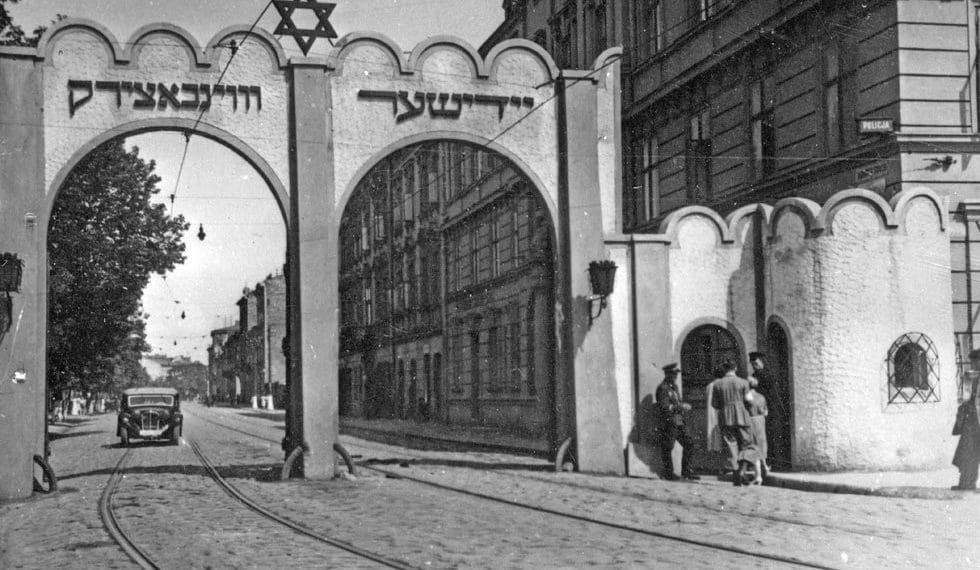
Krakow Ghetto plan
Krakow Ghetto was established in 1941 in Podgorze district. It was one of five major, metropolitan Jewish ghettos created by Nazi Germany in the territories of occupied Poland (General Government – Generalne Gubernatorstwo ).
Before 1939, Krakow was inhabited by around 70.000 Jews, with the vast majority living in the district of Kazimierz . On 6 September 1939, Nazis entered Krakow and began the occupation. Persecution of the Jews began almost immediately. Jews were required to participate in the forced work, wear dedicated armbands, all of Krakow Synagogues were closed. Nazis were confiscating Jewish property and belongings.
On the orders of the Nazi authorities, Krakow was to be cleared of Jewish people by May 1940. Massive deportations of Jews from the city were ordered. Many Jews were deported mainly to neighbouring towns and villages, but also to distant parts of Poland. Some Jewish families managed to emigrate. Around 15.000 Jews were permitted to remain in Krakow, mostly workers employed on services considered important by the Germans. However, further persecution of the Jewish people took place and the decision to create a ghetto was made.
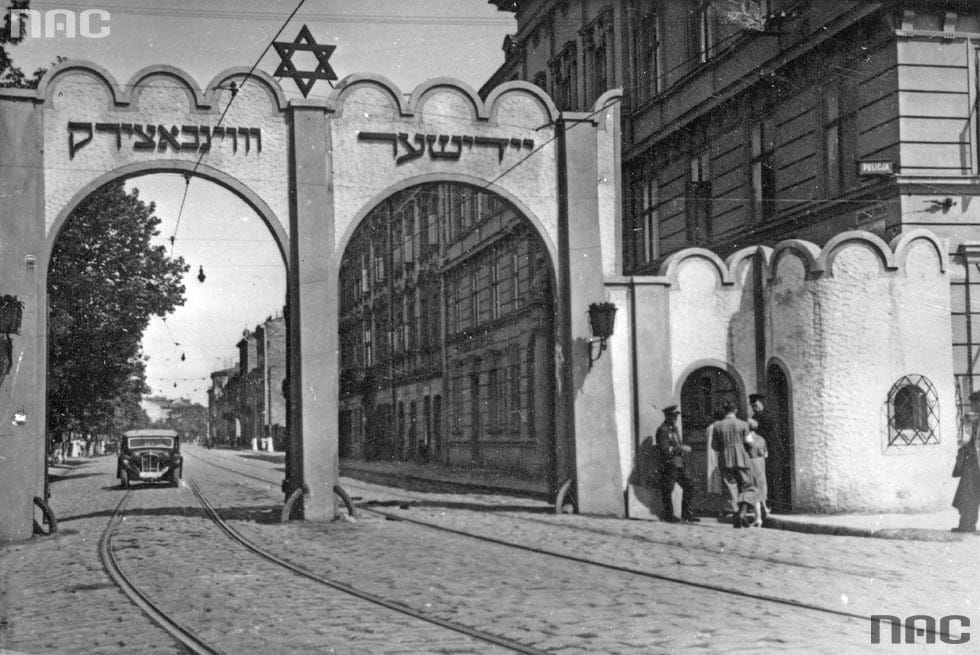
Gate to the Jewish ghetto in Krakow, photography from 1941/42
The Krakow ghetto was formally established on 3 March 1941. It was located in the Podgorze district, an area of the city of Krakow on the southern side of the Vistula River. It consisted of 30 streets and 320 one- and two-storey buildings and before 1941, was occupied by little over 3.000 people. All Jews remaining in Krakow were forced to relocate from Kazimierz. Poles living in Podgorze were also ordered to leave their homes. As a result, the district was suddenly occupied by five times more people. One apartment was allocated by up to four families, and many less fortunate lived on the street.
Krakow Ghetto in Podgorze
The Ghetto was surrounded by the newly built walls that kept it separated from the rest of the city. They were built in close resemblance to Jewish tombstones, matzevahs . All windows in the buildings that opened onto the “Aryan” side were bricked up. Because a number of companies were located on the “Aryan” side of Podgorze, two tram lines were left in the Ghetto but ran through it without stopping. To the Ghetto led four gates, each heavily guarded by German military police and members of the Polish police (the so-called Blue Police, auxiliary police organisation under German leadership, formed by Nazi Germany by reinstating Polish state police that existed before the war).
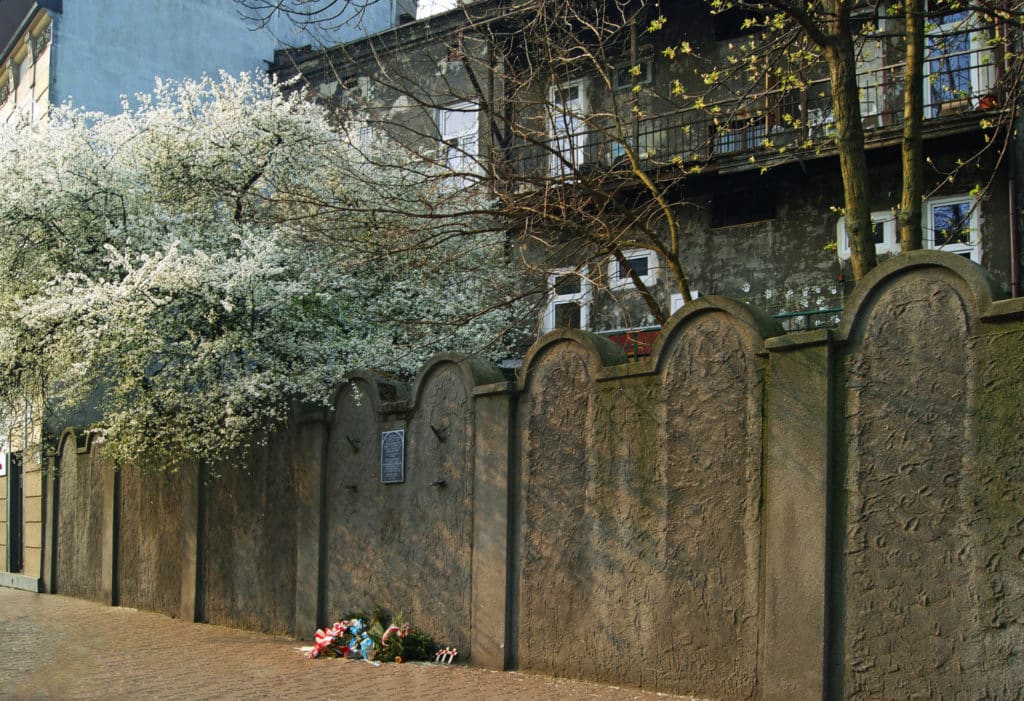
Remains of Ghetto walls, Podgorze Krakow
All Jewish organisations in the Ghetto were operating on the orders and under control of Gestapo. However, resistance groups existed, such as Jewish Combat Organisation that was supported by the Polish Home Army and the Polish Underground State.
Starting at the end of May 1942, Nazis began systematic deportations from the Ghetto to surrounding concentration camps, such as Krakow-Plaszow or Auschwitz Birkenau . The main site of assembling Jews before deportations was on Zgody Square and then they were escorted to the railway station.
On 13-14 March 1943, the liquidation of the ghetto was carried out. Jews that were considered fit for work, approximately 8.000, were transported to Krakow-Plaszow . Around 2.000 were killed in the streets during the liquidation of the ghetto, the remaining inhabitants were deported to Auschwitz-Birkenau and there also murdered.
Of the Jewish community of nearly 70.000 in Krakow, only about a thousand people survived the war.
Commemorating of the victims of the Krakow Ghetto
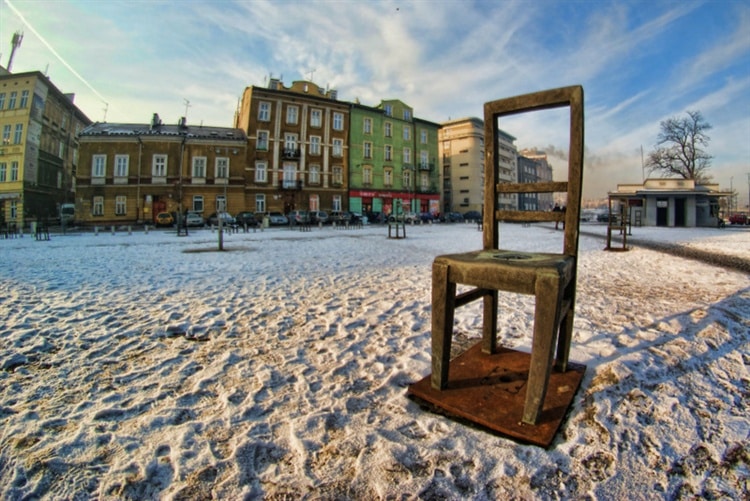
Commemorating of Jews on the Ghetto Heroes Square in Krakow
Today, the starting point of deportations to death camps, Zgody Square is known as the Ghetto Heroes Square (in Polish Plac Bohaterow Getta ) and is a place of art installation, commemorating victims of the Holocaust. Inspired by descriptions of lots of abandoned furniture and personal belongings strewn around the square after the liquidation of the Ghetto, the installation comprises dozens of large iron chairs.
The only remaining piece of the once Ghetto walls at Lwowska Streer is adorned with a plaque which reads “ Here they lived, suffered and perished at the hands of Hitler’s executioners. From here they began their final journey to the death camps “.
The only Polish person living in the Krakow Ghetto was Tadeusz Pankiewicz, owner of ‘The Eagle Pharmacy’ . The pharmacy was located at the Zgody Square 18 and it was almost unprecedented that the Nazi authorities allowed this business to run when Ghetto was established. It was possible due to large bribes that Pankiewicz was offering. He employed three women, Irena Drozdzikowska, Helena Krywaniuk and Aurelia Danek, to help him run the only pharmacy in the Ghetto. The pharmacy not only supplied the Jews with medicines, often free of charge. It quickly became a meeting place of the Jewish intelligentsia living in the Ghetto and of contraband. Tadeusz Pankiewicz was named “Righteous Among the Nations” by Israel in 1983.
Today, in the ‘The Eagle Pharmacy’ houses a branch of the Historical Museum of Krakow . It was established in 2004 after a thorough restoration of the pharmacy. It was possible largely thanks to the contribution of Roman Polanski (who escaped the Krakow Ghetto as a child) and Steven Spielberg. The museum now shows how ‘The Eagle Pharmacy’ looked during World War II and explains the history of Holocaust.
Get Directions
The 15 best things to do in Kraków

Nov 21, 2023 • 9 min read
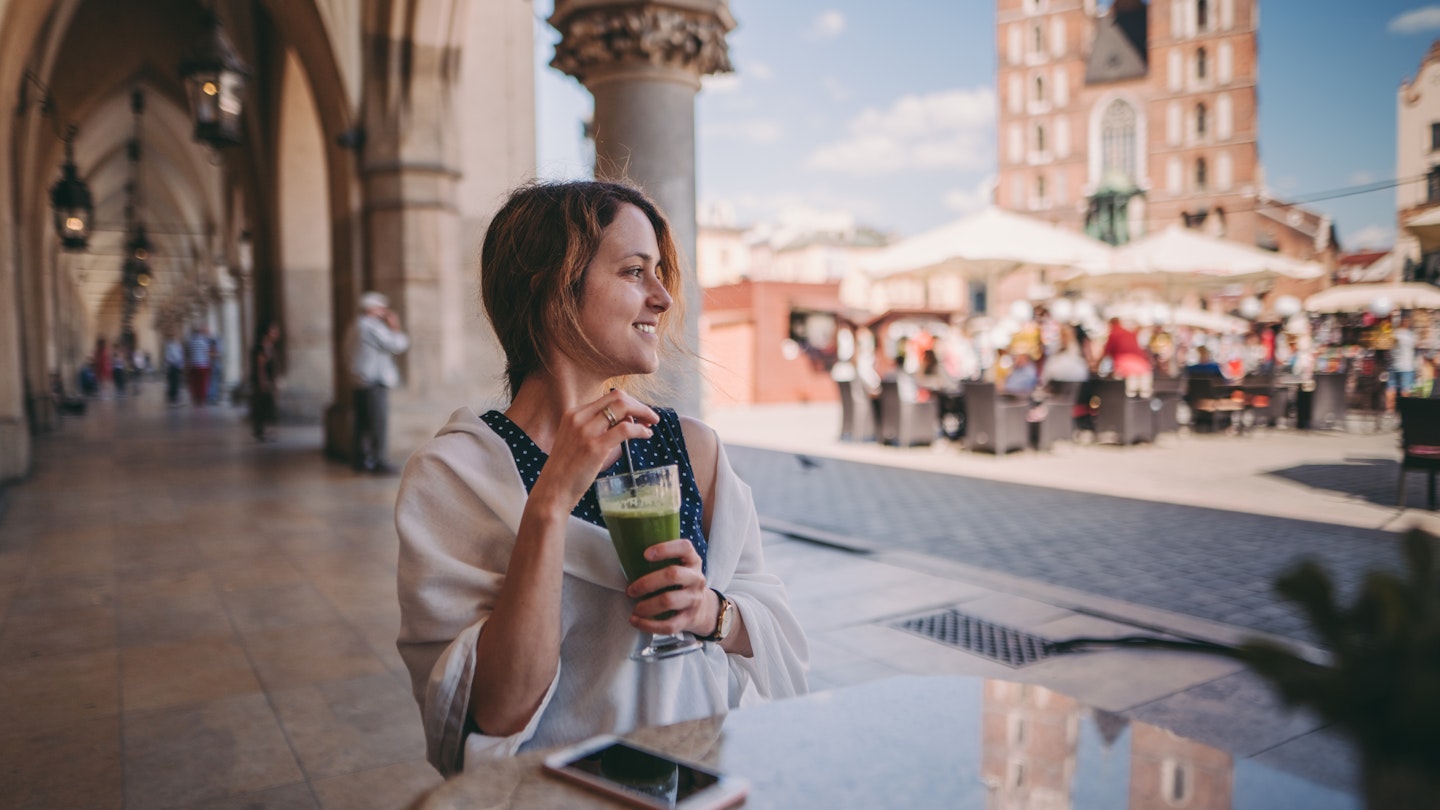
Here are the top things to do on a trip to Kraków © martin-dim / Getty Images
Crowned with an impressive royal castle and dotted with church spires and world-class museums, Kraków combines the historic with the cosmopolitan.
The streets of former Jewish quarter Kazimierz and nearby Auschwitz are sobering reminders of 20th-century tragedy, while the crowds thronging Kraków’s main square and the restaurants lining photogenic Old Town lanes buzz with 21st-century joie de vivre. Alongside heavy-hitting attractions exist simpler local pleasures: strolling alongside the Vistula River; dining on hearty home-style cooking in a retro bar mleczny (cafeteria); catching a local band at a legendary dive bar; enjoying a coffee in hipster enclave Tytano; gawping at the art nouveau architecture.
Here are the best things to do in Kraków.
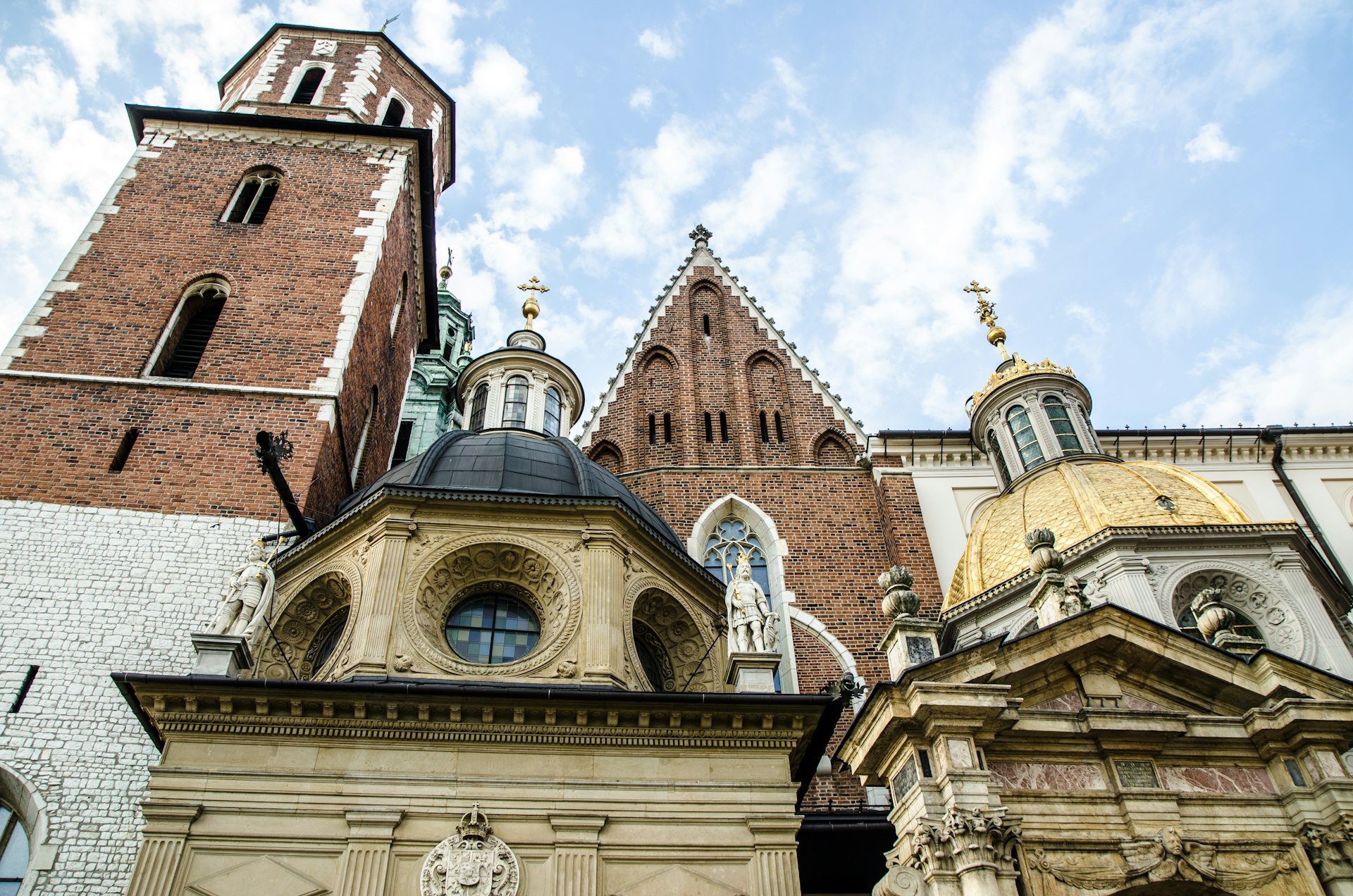
1. Wawel Royal Castle and Wawel Cathedral
Overlooking Old Town from its Wawel Hill perch, what was once the seat of Polish royalty for centuries is the city’s most impressive sight, not to mention the symbol of Poland and a source of local pride. Red-roofed, turreted and ringed by a red-brick wall, this 16th-century Renaissance palace is merely the latest incarnation: royal residences on this very spot have come and gone (burned down, extended, vandalized by Swedish and Prussian armies…) since the 11th-century.
Highlights include the 16th-century tapestries and carved wooden heads in the grand state rooms, the royal private apartments that give you an intimate glimpse into the monarchs’ private lives, the crown jewels in the treasury, and the Szczerbiec (jagged sword) that’s played an essential role in Polish coronations from 1320 onwards – find it inside the vaulted Gothic armory.
Give yourself plenty of time to visit the adjoining Wawel Cathedral , where many of Poland’s kings and queens are seeing out eternity in elaborate tombs, alongside the bones allegedly belonging to the legendary Wawel dragon. The grounds are free to visit, but it’s a really good idea to book tickets for exhibits you want to see at least two weeks ahead due to their enormous popularity.
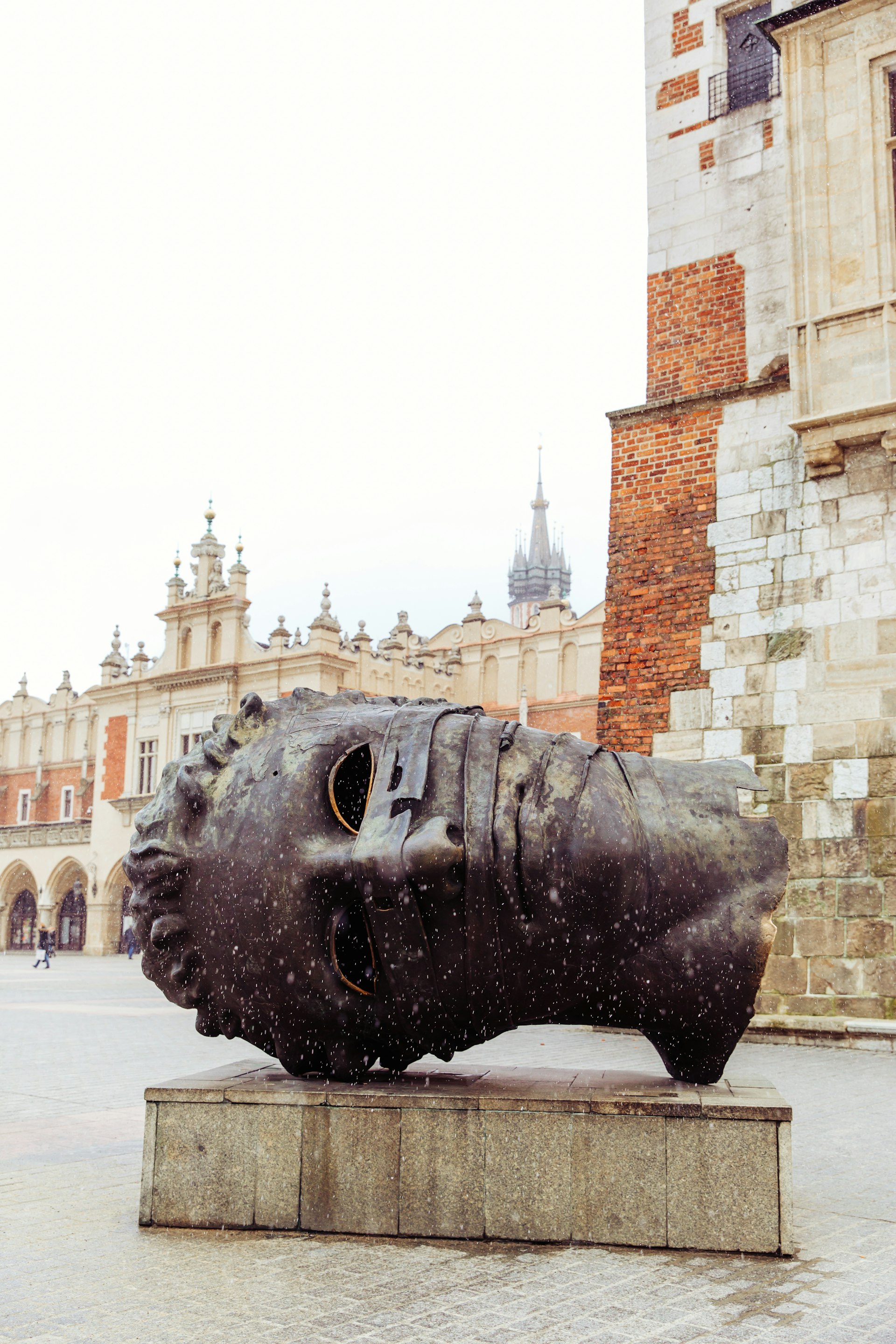
2. Główny Rynek (Main Market Square)
Surrounded by restaurants and overlooked by handsome centuries-old buildings, Główny Rynek (Main Market Square) is the focal point of Old Town, as well as Europe’s largest medieval town square. After you’re done browsing the wares inside the market building, go back to the Middle Ages by descending to the medieval-meets-the-21st-century museum beneath the square.
Clever multimedia displays, holograms and animated puppets show you medieval market stalls and teach you about vampire prevention burials. Buy your timed ticket online in advance. Free entry on Tuesdays; closed second Monday of each month.

3. Auschwitz-Birkenau
You don’t know what will touch you particularly deeply until you get there. For some, it’s the "Death Block" with its torture cells and its crematorium. For others, it’s the gas chambers and the endless rows of crematoria chimneys at Birkenau , where most of the mass killings occurred. For others still, it’s the mountains of eyeglasses and prosthetic limbs, the mass of human hair collected from victims to be used in textile production, and piles of battered suitcases with home addresses written on them by those for whom this Nazi extermination camp became their final destination.
In any case, Auschwitz is unlikely to leave you unmoved. More than a million Jews, as well as numerous Poles and Roma, were systematically killed here between 1940 and 1945, and the death camps have been preserved as a brutal, essential history lesson.
Auschwitz is reachable by bus, train and organized day tour from Kraków. While solo travelers can visit the site without a guide, it’s well worth joining a tour to get the most out of it, from the screening of the graphic 1945 documentary film by the Soviet liberators to the exhibitions in the barracks.

4. Explore Kazimierz
Southeast of Old Town, the Kazimierz neighborhood had been Poland’s most important center of Jewish culture for 500 years until mass deportation and extermination of Kraków’s Jews by the Nazis destroyed it. Largely rundown during the Communist era, Kazimierz has bounced back in recent years.
A stroll through its streets is a wonderful way to get to know its historic sights, from the restored Old Synagogue and a 19th-century Jewish cemetery with surviving tombstones to the Moorish-style Temple Synagogue and the sobering Galicia Jewish Museum that traces the history of Jews in Kraków. Browse the flea markets on Plac Nowy on the weekends, or attend a film screening or concert at Cheder during the Jewish Culture Festival.
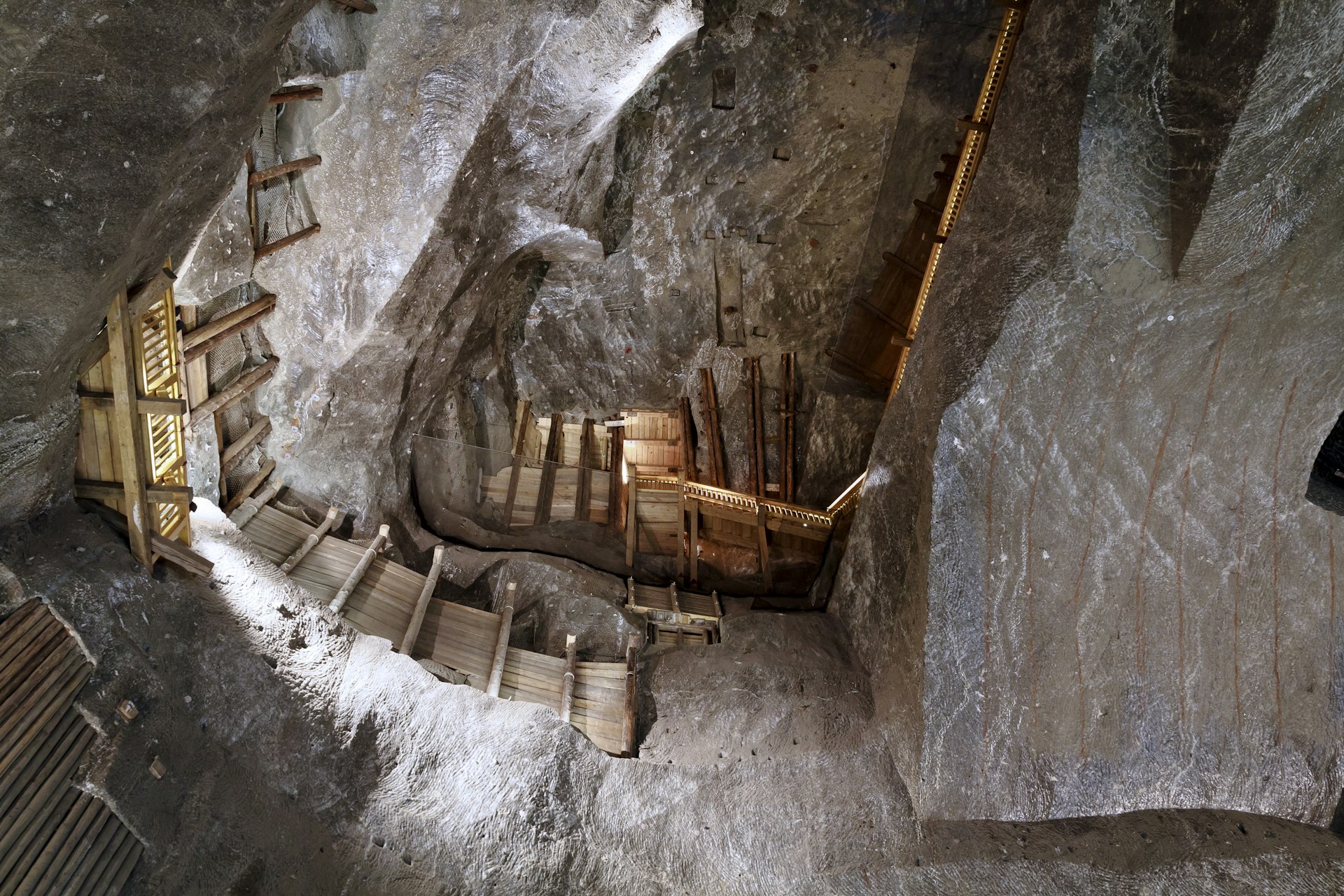
5. Wieliczka Salt Mine
Another massively popular attraction that’s not actually in Kraków proper but is easily reachable from the city, this UNESCO-certified subterranean labyrinth of passages and chambers has been drawing visitors since the 1720s. It’s not for the claustrophobic: as part of a "tourist" tour, first-timers descend at least 125m (410ft) below the ground and spend two hours in the depths of the former mine, while return visitors can opt for a more immersive miners’ tour.
Highlights include an underground lake, chapels adorned with statues carved from the white stuff, and a salt cathedral with chandeliers. And yes, everything around you is carved from salt; we licked the wall so that you wouldn’t have to. Wieliczka Salt Mine is easily reached from Kraków by bus, train or tour. Pack a sweater.
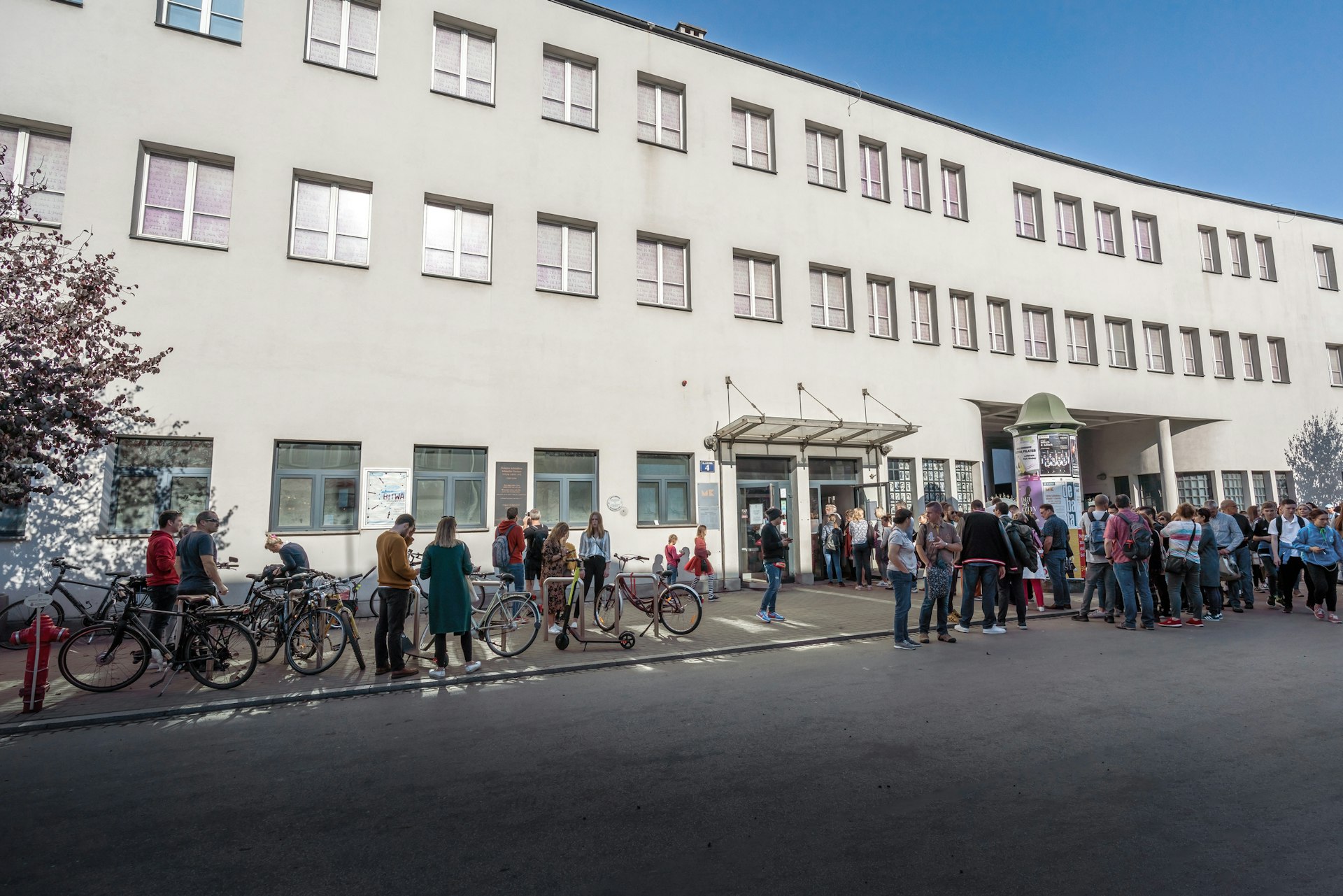
6. Schindler’s Factory museum
You’re likely to have heard of Oscar Schindler, the German industrialist immortalized in Steven Spielberg’s 1993 film Schindler’s List . During WWII, Schindler saved more than a thousand Jewish inhabitants of the Podgorzé ghetto from deportation to the death camps by employing them at his enamel factory. Schindler's Factory museum , which was part of the Schindler’s List film set, was given a major facelift in 2010 and became one of Kraków’s must-visit museums . Book your timed slot online at least three days in advance (it’s hugely popular!), and don’t miss the superb permanent exhibition, Kraków During Nazi Occupation 1939-1945, that tells the story of everyday life, underground resistance and anti-Semitic repressions in the city during WWII.
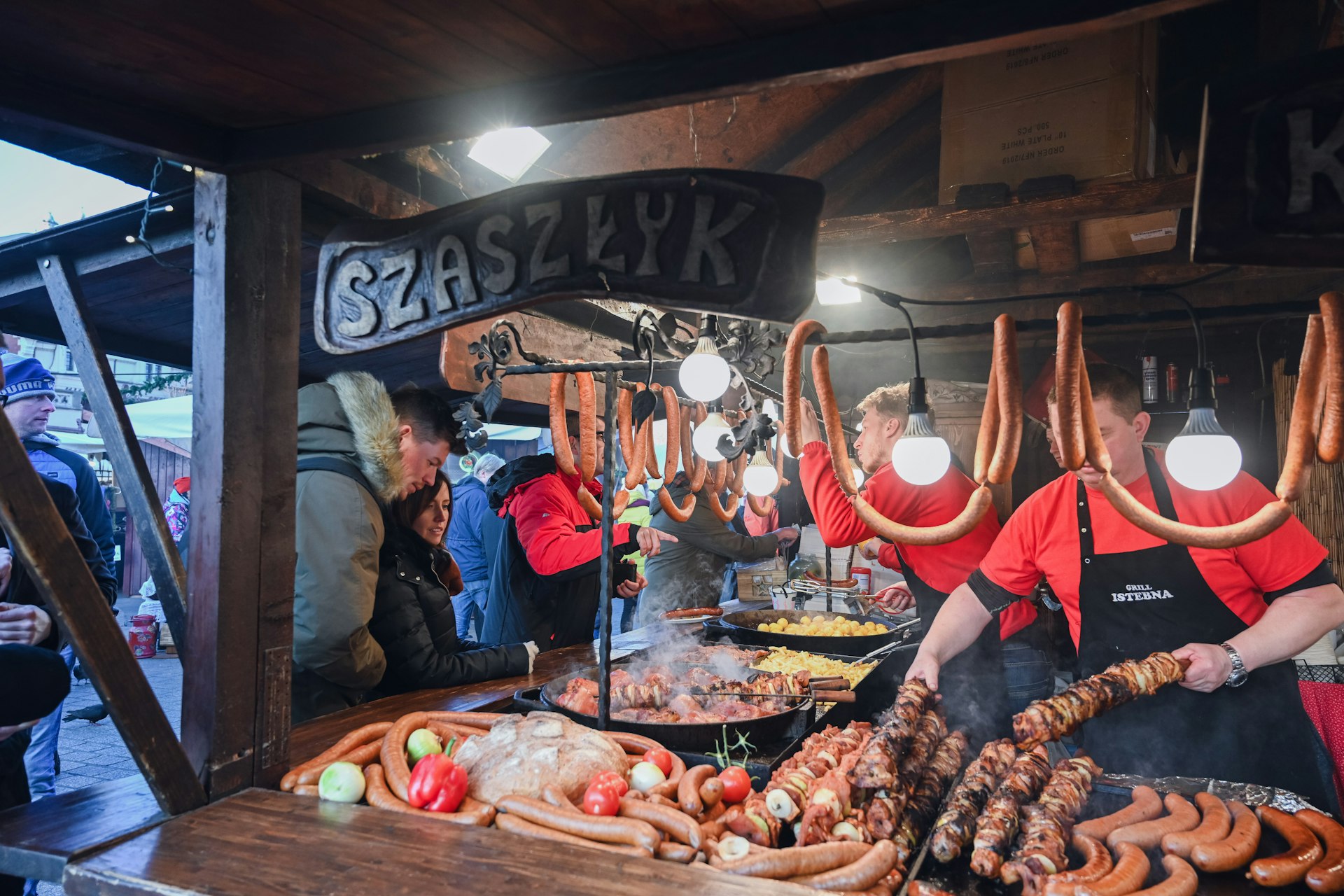
7. Eat street food
Many cities have signature street food. Paris has its croissants, Hanoi has its bánh mì, Vienna has its käsekrainer , and Kraków has its obwarzanek . Chewy, moreish and topped either with poppy seeds or sesame seeds, Kraków’s bagels are found at stalls on every corner in Old Town, and locals will tell you which stall is likely to have the fresher lot.
But there’s more to Kraków’s street dining than bagels. For the best kielbasa (signature Polish sausage) in town, head for the Kiełbaski z Niebieskiej Nyski van in front of the Hala Targowa market on ul. Grzegorzecka. Then there’s zapiekanka – half a baguette topped with melted cheese, mushrooms and a squirt of ketchup. Poland’s answer to pizza was invented in the 1970s when basic ingredients were all you could get, but now versions with fancier toppings are ubiquitous at fast food stands. For numerous zapiekanka sellers under one roof, try the Okrąglak food court at Plac Nowy in Kazimierz.
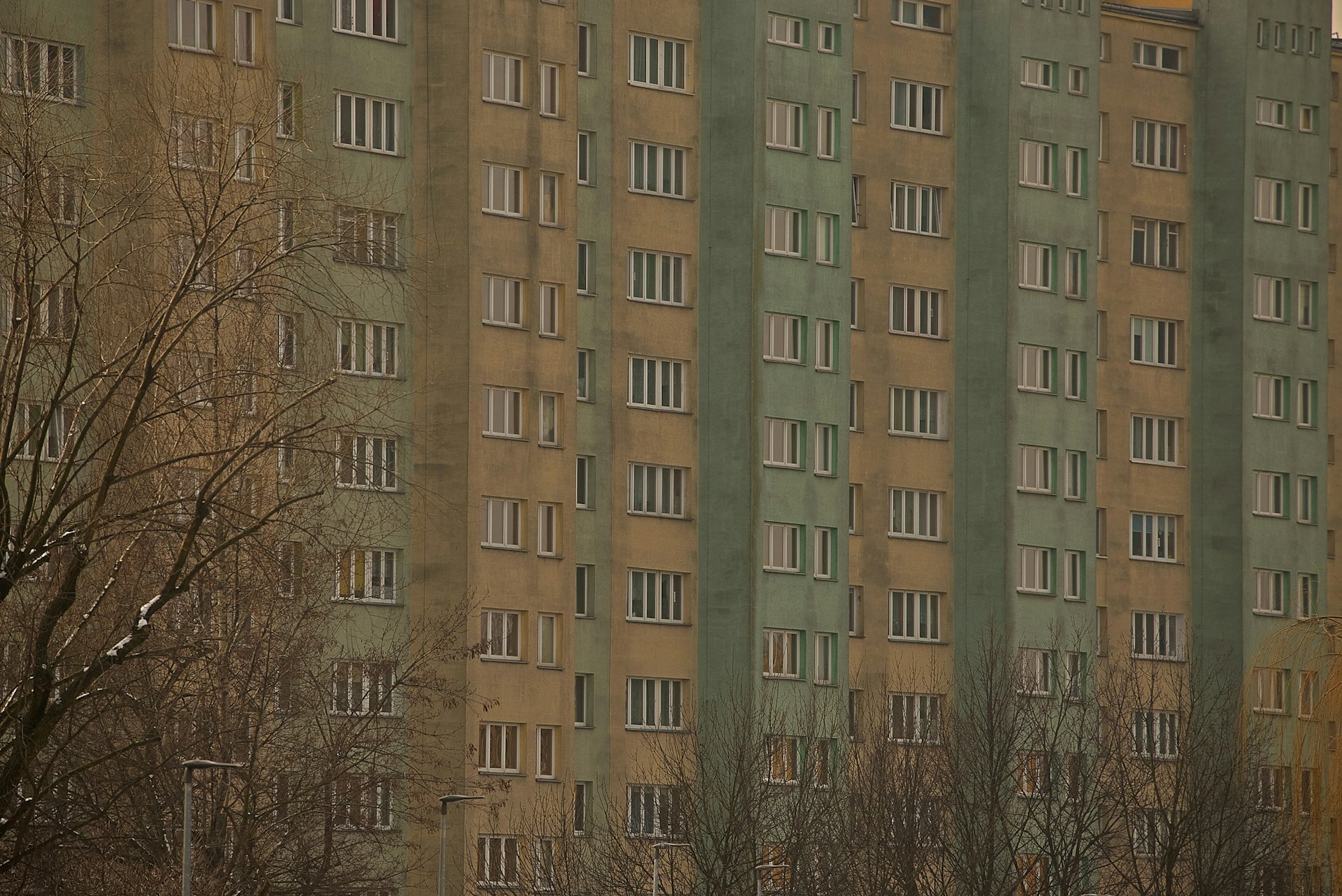
8. Nowa Huta
If you want to see how steelworkers lived in the 1950s, catch tram 4 or 10 from central Kraków to this masterpiece of socialist-realist urban planning and Communist architecture in the east of the city. If wandering around the uniformly grey, identical blocks of flats isn't enough of a draw, take a tour of Nowa Huta in a vintage, Communist-era Trabant with Crazy Guides , who’ll take you down into the old nuclear fallout shelters and ply you with vodka.
9. Klub Awaria
Klub Awaria is the kind of dingy dive bar that your mother warned you about: a sticky-floored, vaulted-ceilinged saloon where the carpe-diem clientele will gladly press a drink into a sober stranger’s hand to help them participate in the mildly anarchic nightly revelry. Up-and-coming local blues and rock bands perform on the little stage most nights and after the band is done, there’s occasional dancing on the tables and on the bar itself by regulars to Tina Turner classics.

10. Cruise along the Vistula
The slow-flowing Vistula River bisects the city. Join locals during their morning runs along the footpaths that run alongside the river banks for several kilometers from near Wawel Royal Castle to the city’s eastern suburbs, skirting Kazimierz on the way. Alternatively, if you have local friends, you might be invited aboard a party boat with a full bar and music system; these are available for hire by groups and are essentially floating nightclubs. More easily accessible are hour-long cruises that depart below Wawel Castle Hill, showing off the city’s important landmarks, such as the Dębnicki Bridge, the Norbertine Monastery , the Manggha Museum of Japanese Art and Technology and the Piłsudski Bridge.

11. Swim in Zakrzowek
Tall limestone cliffs and dense pine forest surround this lagoon with its clear, turquoise waters that feel a million miles away from urban life, even though it’s only a short tram ride (on route 1 or 4) to Kapelanka, southwest of Old Town. The lagoon began its life as a limestone quarry but it was deliberately flooded in 1990 after falling into disuse. It then became a popular swimming and picnicking spot for locals. It's currently undergoing renovations that won't be complete until 2023, so you can't swim or dive here at the moment, but it's perfect for a scenic picnic and some lovely out-of-town hiking.
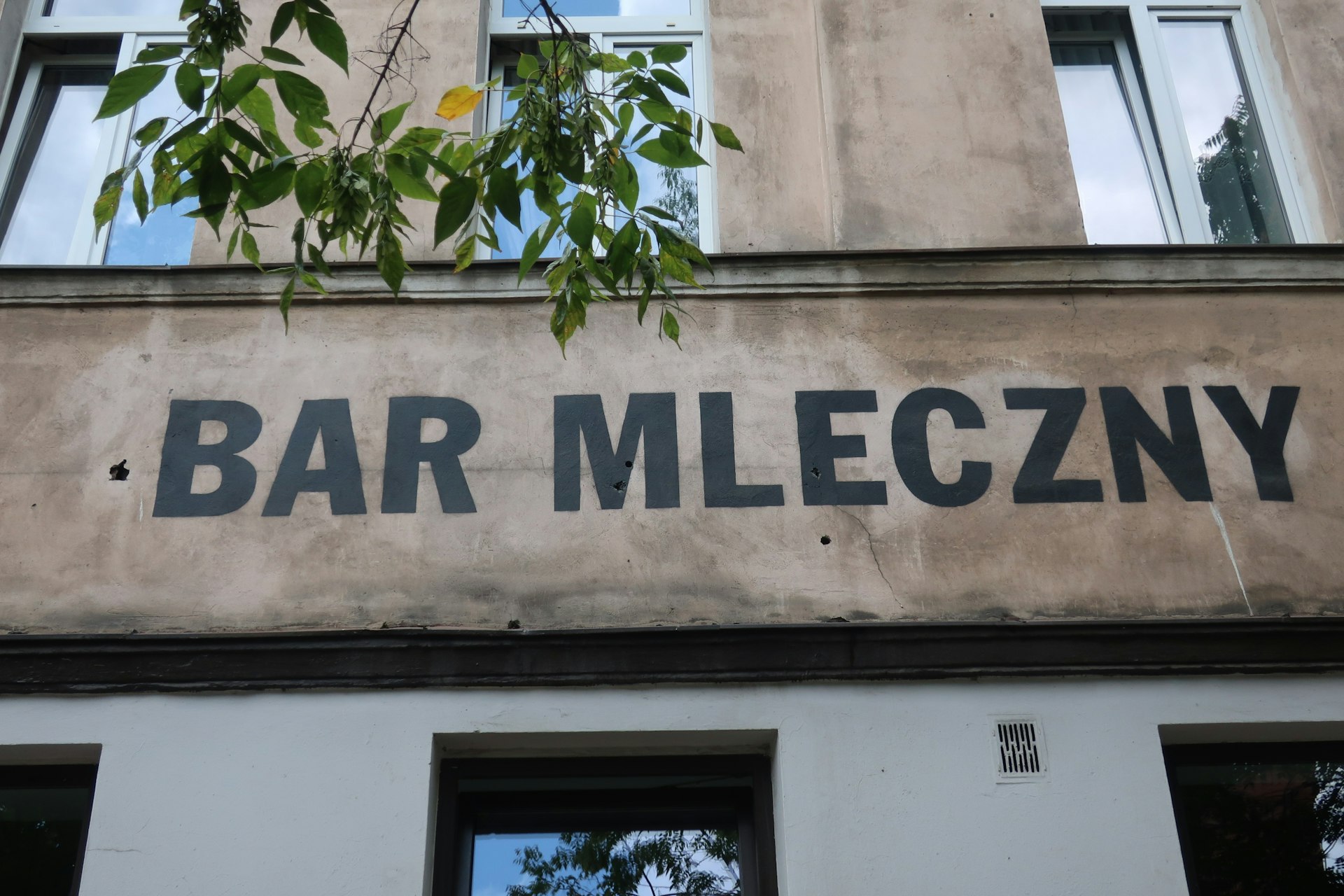
12. Dine at a bar mleczny
Cheap, cheerful, and with seriously retro decor, a bar mleczny is a time-warp step behind the Iron Curtain into 1980s Poland – in a good way. Dotted around the city, bar melczny are dirt-cheap cafeterias, where you’ll be rubbing shoulders with locals while you load up your tray with soup, pierogi (filled dumplings), placki ziemniaczane (potato pancakes) and other hearty, belly-warming staples – all without dropping more than 10zl (around US$2). There’s a branch at Grodzka 43 in Old Town and another at Starowiślna 29 in Kazimierz.
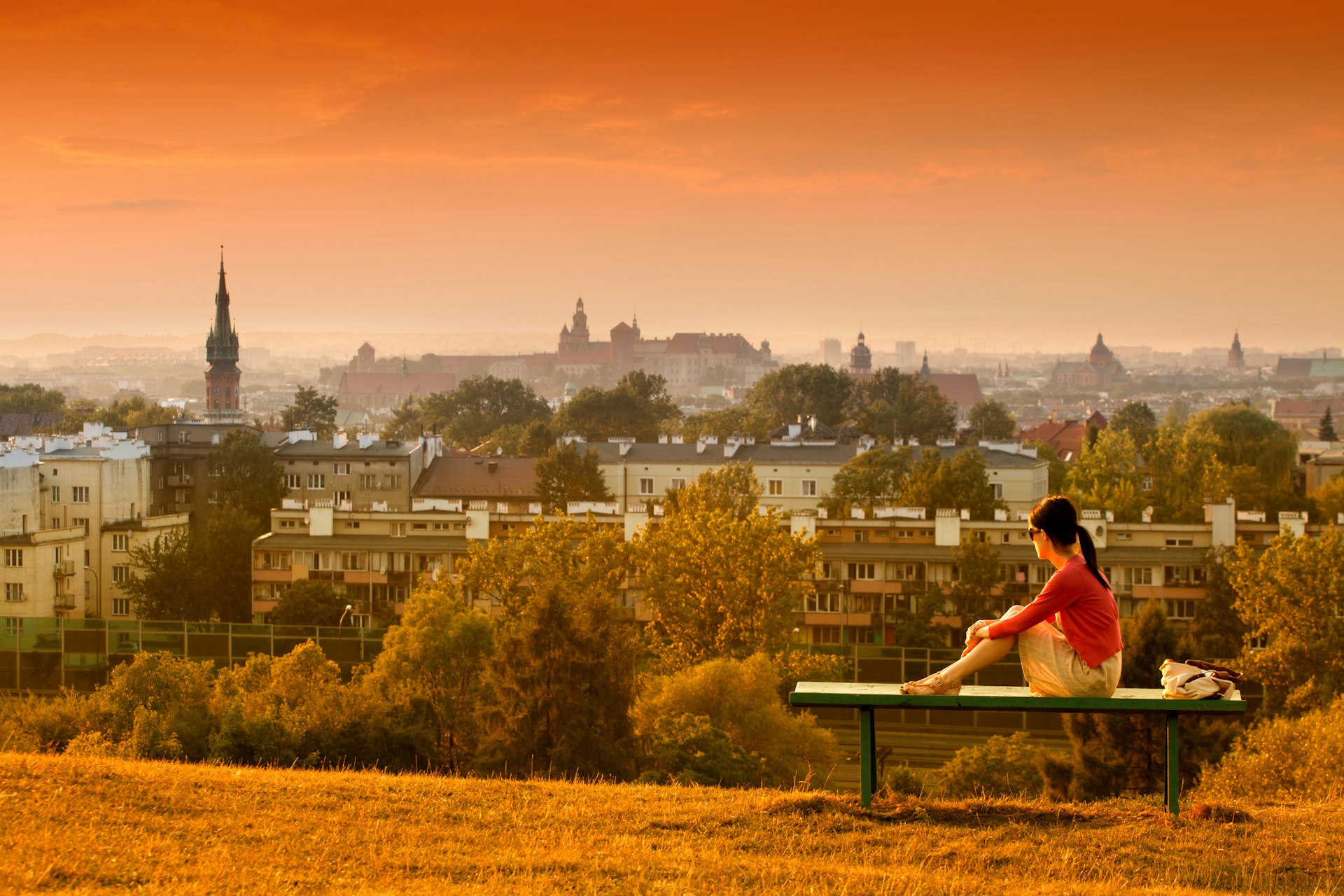
13. Summit Kopiec Kościuszki
When you’re standing on Wawel Hill, you may notice lump-like green hills surrounding Kraków. The origins of Kraków Mounds are lost in the mists of time, but it’s believed that the oldest – Kopiec Krakusa and Wandy – were built by pagan tribes several millennia ago as part of some solar calendar: during the summer solstice, the sun rises at Wandy and sets at Krakusa. Kopiec Kościuszki is a newer mound, completed in 1823 to commemorate a fallen Polish general. Catch bus 100 to the mound for fantastic views of Wawel Castle, St Mary’s Basilica and Główny Rynek.
14. Spend your night out finding a “lost bar”
Other cities have speakeasies, while Kraków has its “lost bars”. It’s the same idea, even though Kraków’s hidden drinking dens are a recent development. Head to the Smakolyki restaurant on Floriana Straszewskiego, find your way to the cloakroom and pass through to a hidden courtyard from which you enter Mercy Brown . It’s 1920s Kraków – all velvet couches, mood lighting, chandeliers, and cocktails from a bygone era (gin with jasmine tea cordial, anyone?). Entertainment includes burlesque shows.

15. Hang out in Tytano
Just west of Old Town, a decrepit former tobacco factory has been transformed into a pocket of hipsterdom, complete with art studios, exhibition spaces, beer gardens and brunch cafes that attract Kraków’s young and cool contingent. Check out the latest photography exhibition or fashion event, then grab a coffee from Kraków’s specialty roasters at Bonjour Cava.
This article was first published Jul 31, 2022 and updated Nov 21, 2023.
Explore related stories

Aug 5, 2022 • 5 min read
Here are the best parks, wild spaces and meadows in Kraków, one of Europe’s greenest cities.

Aug 4, 2022 • 7 min read

Feb 2, 2022 • 5 min read
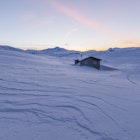
Sep 23, 2020 • 5 min read
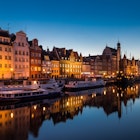
Nov 21, 2019 • 6 min read
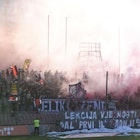
Aug 8, 2019 • 5 min read

Nov 20, 2015 • 5 min read

Jun 17, 2024 • 12 min read

IMAGES
VIDEO
COMMENTS
Book our extended 3-hour walking tour of Kazimierz and the former Jewish Ghetto in Krakow to visit 1 Synagogue. This option includes tickets to the 19th-century Tempel Synagogue, which is known for its beautiful Moorish-style interior, or the restored Old Synagogue from the 15th century, which now houses a museum of Krakow Jewish culture & history.
Before turning your attention to World War Two in Krakow. We visit the former Krakow ghetto and the empty chairs holocaust memorial. We discuss the Nazi occupation, as well as well-known figures like Oskar Schindler. We visit the Krakow ghetto wall and Schindler's List filming locations. You will also learn about Kazimierz since the war.
By March 21, 1941, the Germans had concentrated the remaining Jews of Krakow and thousands of Jews from other towns in the ghetto. Between 15,000 and 20,000 Jews lived within the Krakow ghetto boundaries. They were were enclosed by barbed-wire fences and, in places, by newly built stone walls, some shaped to resemble tombstones.
GetYourGuide traveler - Romania December 4, 2022 - Verified booking. The guide is waiting for you with a smile on his face and an umbrella with the British flag, written with free tour, right in front of the Church in the Market Square The tour includes a lot of useful information, plus a short 15-minute break in Plac Nowy, where you can ...
Ghetto Heroes Square, the 1st stop on the walking tour in the former Jewish Ghetto. A 3 metre high wall was erected around the confines of the ghetto, crowned with arches conscientiously designed to resemble Jewish tombstones. The remnants of the Ghetto Wall is one of the first sights you'll encounter in this part of Krakow.
Visit the famous Plac Bohaterów Getta (Ghetto Heroes' Square), where Jewish inhabitants of Krakow were identified and sent off to concentration camps. See a fragment of the original ghetto wall, which now serves as a monument and place of pilgrimage for many Jewish people visiting from abroad. Continue to the buildings where thousands of ...
Led by: Bartosz Wencel March 13th, 2024 marks the 81st anniversary of the liquidation of the Kraków Ghetto. The ghetto was established in the district of Podgórze, south from the Kraków city center, on the other bank of the Vistula River. It existed for two years during which the Germans murdered most of Kraków's Jews, […]
The prisoners of the ghetto were mainly Krakow's Jews. In 1942 deportations began and in 1943 the ghetto was liquidated. During this online guided tour Dr. Ewa Węgrzyn (Jagiellonian University) will show us various places that are located in the area of the former ghetto and will tell us more about its history.
Krakow Jewish Quarter and Ghetto Tour with local historian PhD. 35. Recommended. 100% of reviewers gave this product a bubble rating of 4 or higher. Historical Tours. ... Follow it up with a visit to Oscar Schindlers factory for more about the history . Read more. Written January 4, 2020.
The cost of tickets for Jewish Ghetto Tours in Krakow depends on the ticket you book. The Bike Tour of Old Town, Jewish Quarter, and the Ghetto is priced at 84zł (€19) for adults and 77zł (€17) for students between seven and 26 years. Tickets for Kazimierz, Schindler's Factory & Ghetto Guided Tour cost 224zł (€50) for adults aged 18 ...
Description. Information. The ghetto, which functioned in Podgórze in 1941-43, bore witness to a savage and tragic stage in the extermination of Kraków's Jews. The Jewish community of Kraków before the Second World War consisted of over 64,000 people, which accounted for 25% of the city's population. After the forced resettlements that ...
The Krakow ghetto was officially established on March 3rd, 1941. From May 1942 onwards, the Nazi authorities began mass deportation from the ghetto to the surrounding concentration camps. ... It's impossible to visit Krakow today without remembering the long and at times disastrous history of the city. Even though the Krakow ghetto is today ...
Podgorze is a quiet district of Krakow, located on the opposite bank of the Vistula River coming from Krakow's Old Town. Until a few years ago Podgorze was quite out of the way for tourists, and it was a rather run-down area. Today Podgorze is becoming more and more lively, and is a residential area quite popular with young local families.
Kazimierz was a separate city out of Krakow where most of the Jews lived. They built many synagogues and it is still possible to visit it. Nowadays Kazimierz is a district of Krakow. During World War Two Nazis built separate places for the Jews - ghetto. Ghetto was located in Podgorze on the other side of the river.
Learn the history of the former Jewish Ghetto in Krakow on a walking tour with a guide. Visit the memorial in Ghetto Heroes Square. Find out more about the Holocaust and the Nazi occupation of Poland. ... Then, visit Ghetto Heroes Square, the center of life in the so-called Jewish Housing District. Discover how the Kraków Jews were forced to ...
About the tour. Our 3-hour tour with a licensed museum guide of Oskar Schindler's famous "Emalia" Factory and the former Jewish ghetto site provides a splendid occasion to discover the Kraków Second World War history.. The tour starts with a visit to Schindler's Factory, the most visited museum in Kraków.While visiting the permanent exhibition "Kraków - czas okupacji 1939-1945 ...
Ghetto Heroes Square. Was once the biggest open space in Krakow Getto and was at once the source of the residents' greatest relief. It was also the site of families being torn apart, mass deportations to the death camps, beatings, and executions. The square was a scene of their greatest horrors and humiliation.
Putting up hebrew signs in the Kraków Ghetto In the 17 days between the ghetto's establishment and the March 20, 1941 resettlement deadline, approximately 3,000 original residents of the district were relocated across the river to be replaced by some 16,000 Jews, whose property and possessions were confiscated with the exception of what they could carry into the ghetto.
Stand at the gates that once served as the entrance to Krakow's Jewish Ghetto; Visit the iconic Eagle's Pharmacy and learn about its history and significance; Full description. Meet your guide at Plac Bohaterów Getta to begin the tour. This emblematic plaza will take you back to the 1940s, when the city was occupied by the Germans.
Ghetto Heroes Square. During the war, it was the largest open space in Krakow Ghetto, where the mass deportations to the death camps, beatings, and slaughter were carried out. Today, 33 gigantic and 37 regular chairs from iron and bronze constitute a symbol of the atrocities and emptiness the ghetto inhabitants left behind. Szeroka street
The Kraków Ghetto was one of five major metropolitan Nazi ghettos created by Germany in the new General Government territory during the German occupation of Poland in World War II. ... A 24-person Jewish board was formed in the city of Kraków and later in the Krakow Ghetto, when the ghetto was formed on March 3, 1941.
Krakow Ghetto was established in 1941 in Podgorze district.It was one of five major, metropolitan Jewish ghettos created by Nazi Germany in the territories of occupied Poland (General Government - Generalne Gubernatorstwo).. Before 1939, Krakow was inhabited by around 70.000 Jews, with the vast majority living in the district of Kazimierz.On 6 September 1939, Nazis entered Krakow and began ...
During WWII, Schindler saved more than a thousand Jewish inhabitants of the Podgorzé ghetto from deportation to the death camps by employing them at his enamel factory. Schindler's Factory museum, which was part of the Schindler's List film set, was given a major facelift in 2010 and became one of Kraków's must-visit museums. Book your ...
Our most recommended things to do in Krakow Jewish Ghetto. Visit one of the most important and most popular museums in Krakow. Schindler's Enamel Factory, located on 4 Lipowa street, is a part of the Historical Museum of Krakow. The main exhibition title is ''Kraków under Nazi Occupation 1939-1945'. You are invited to join the tour with a ...